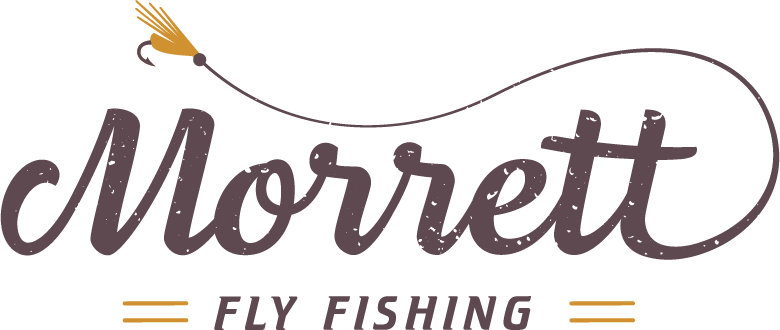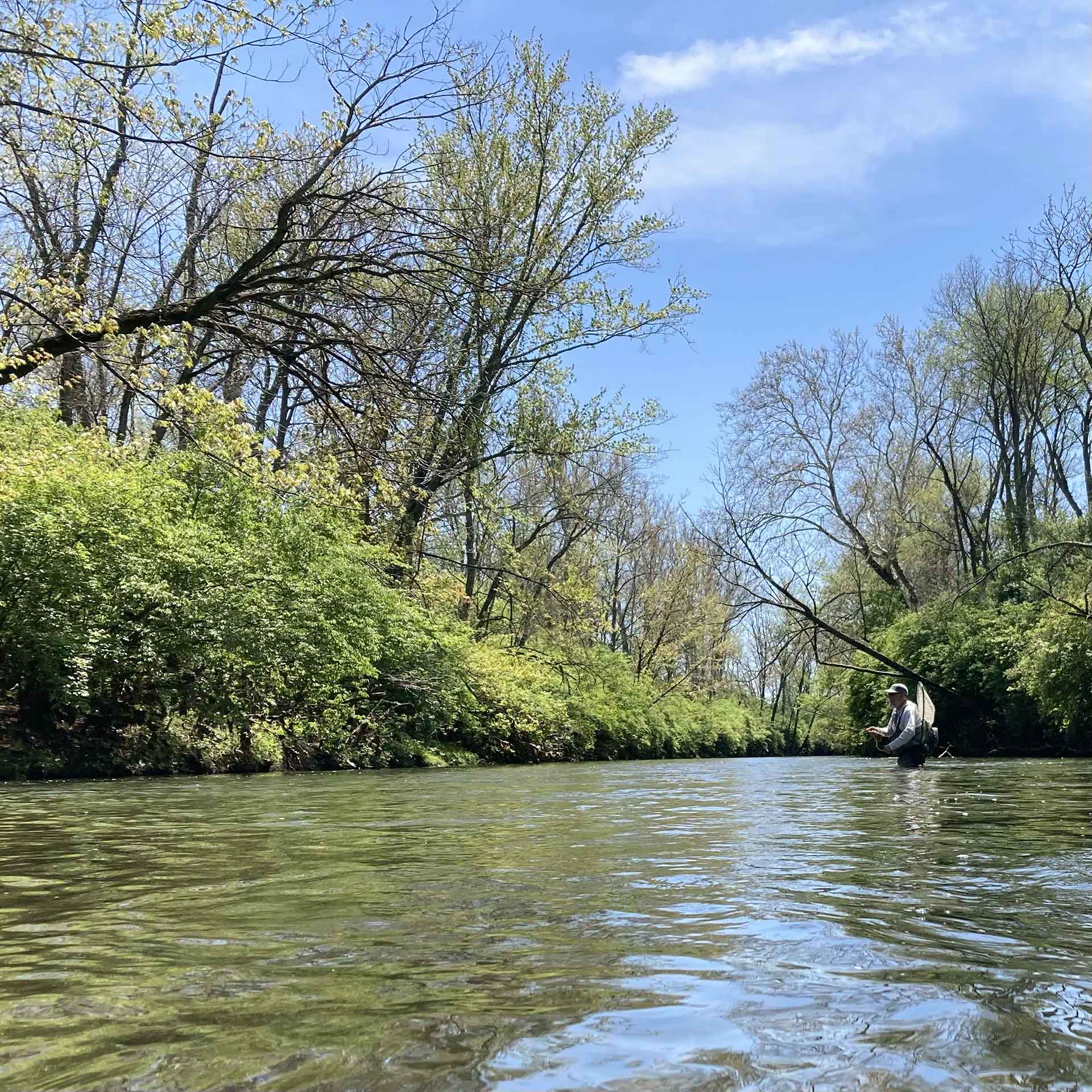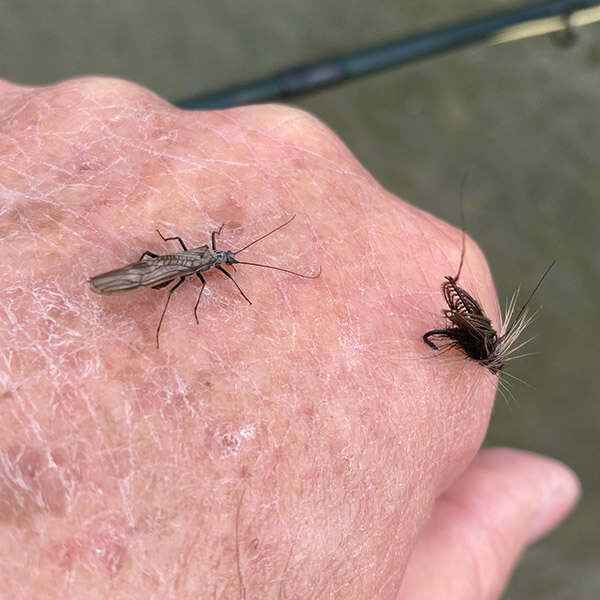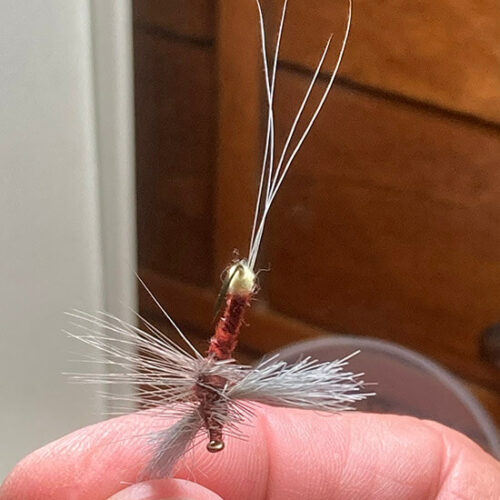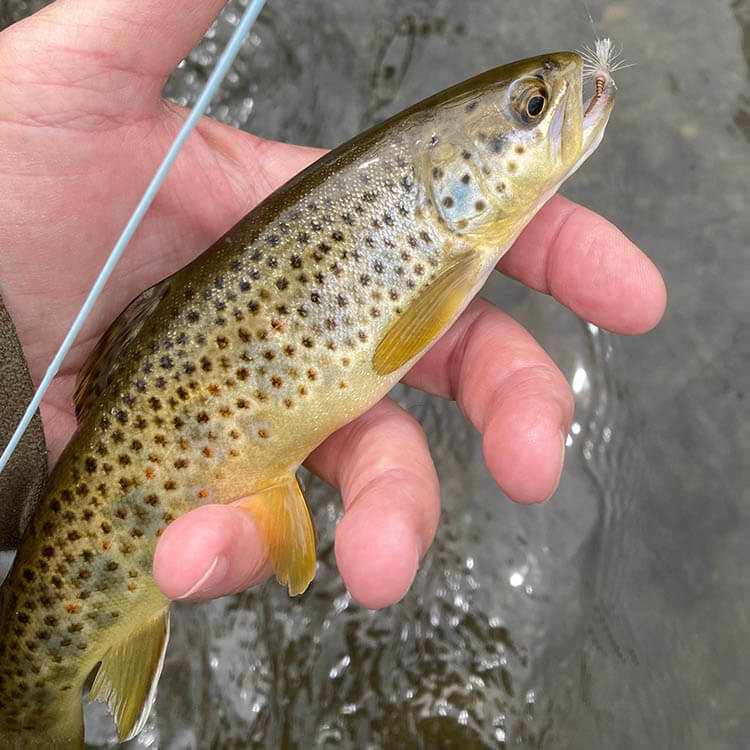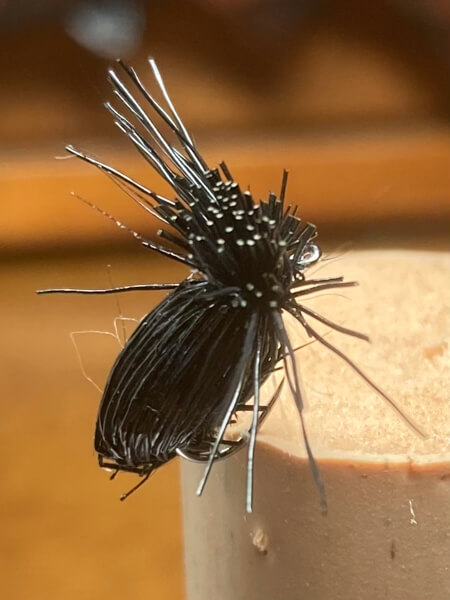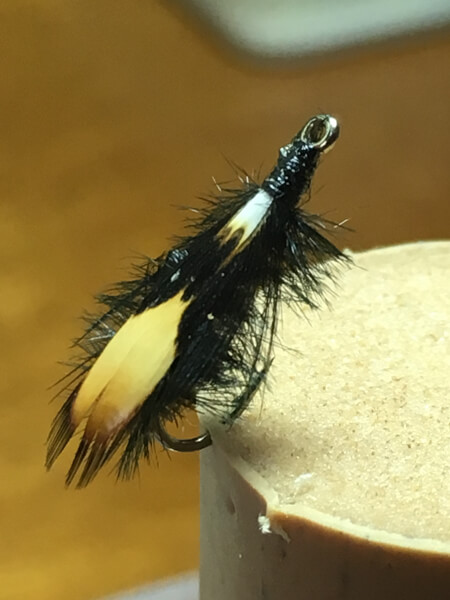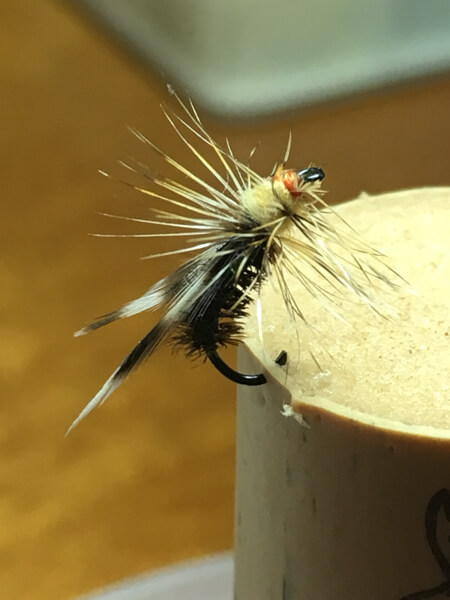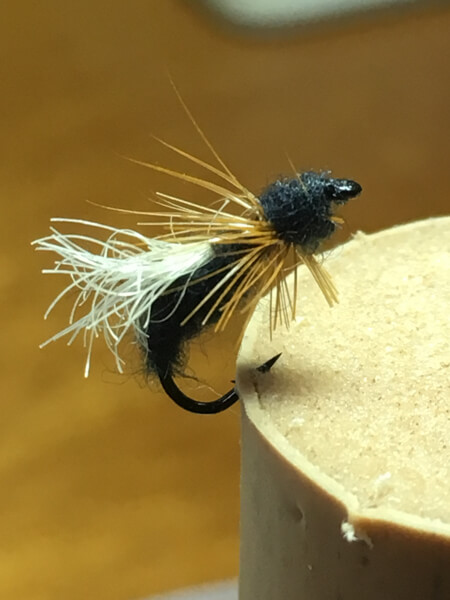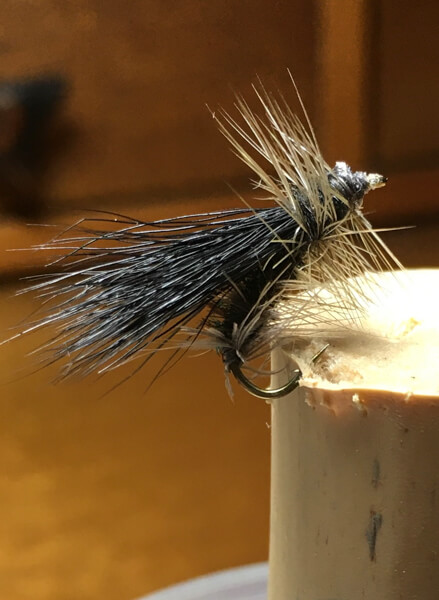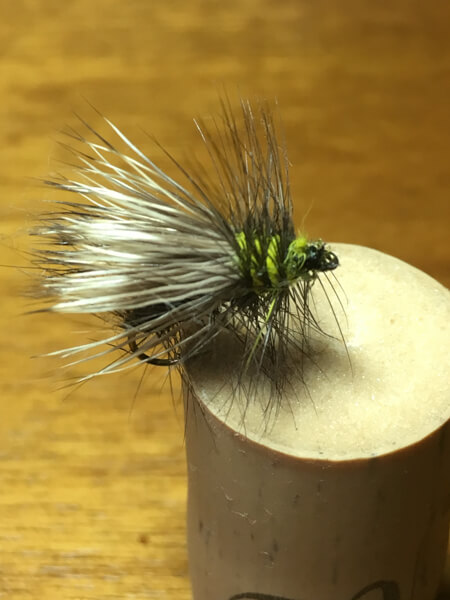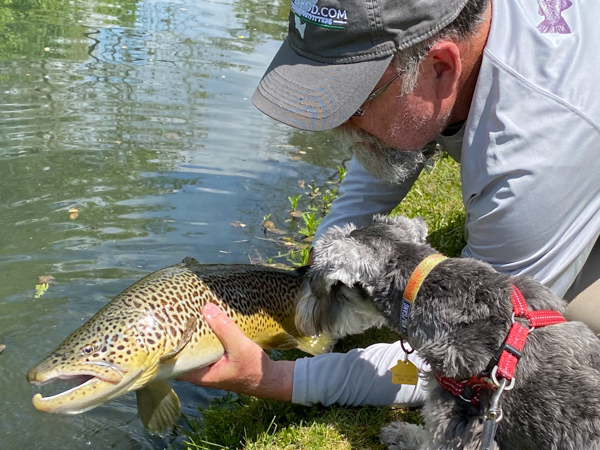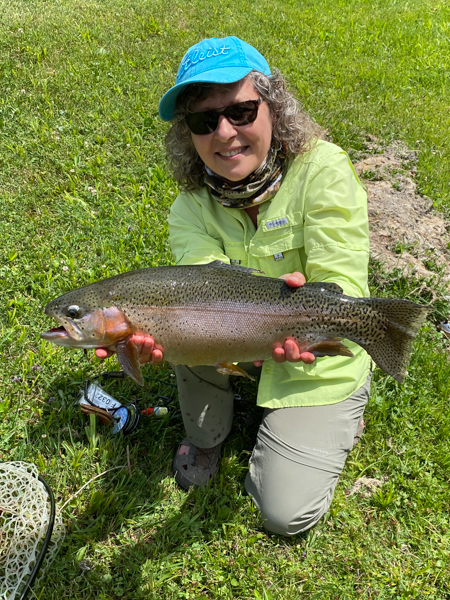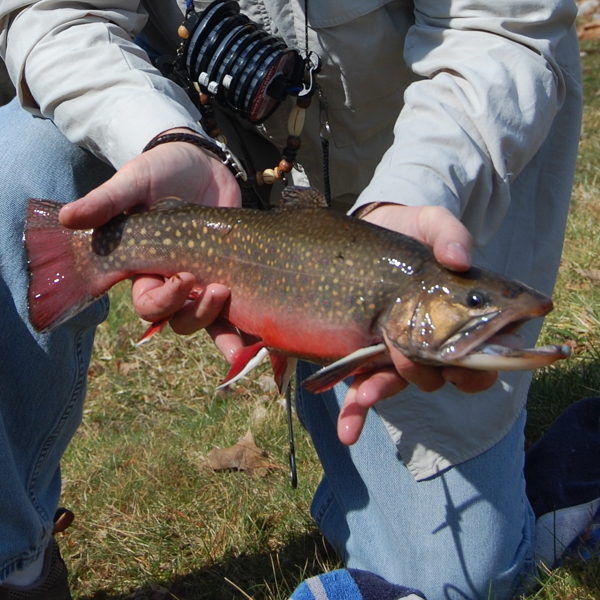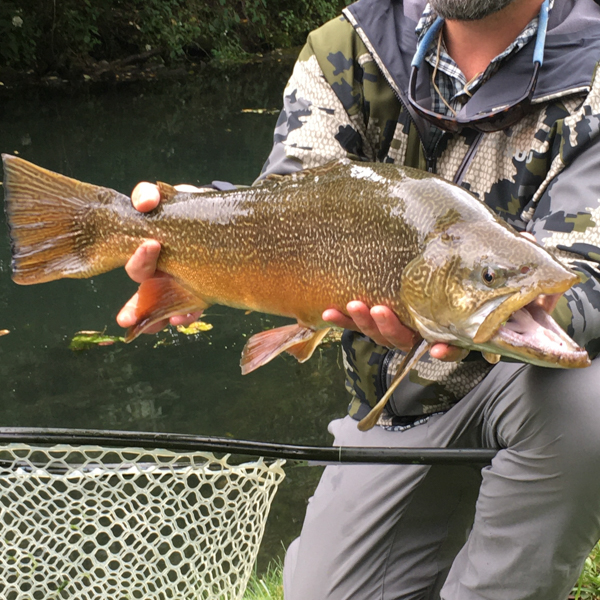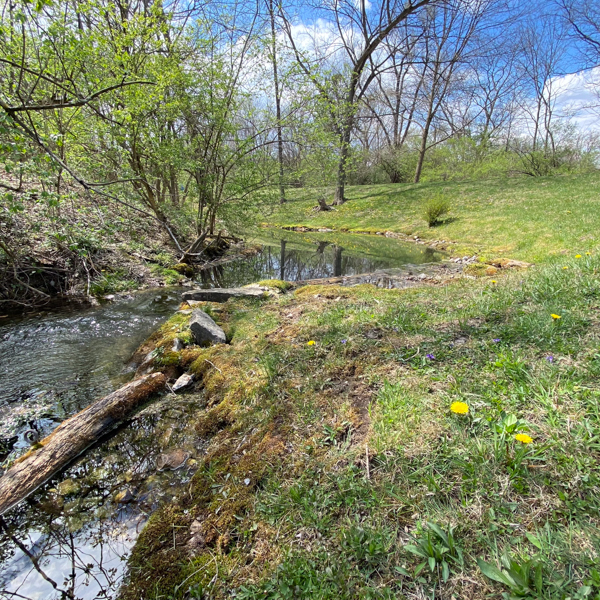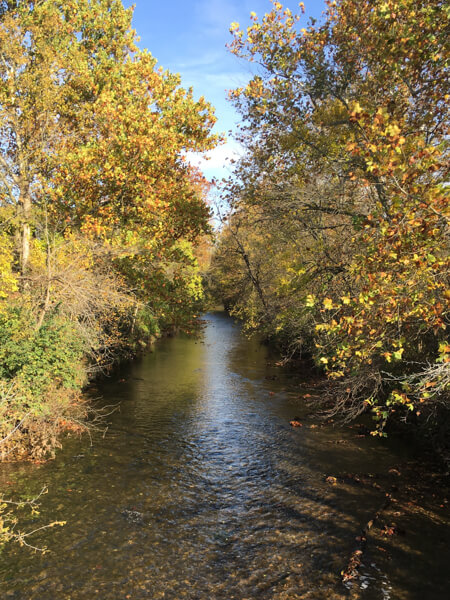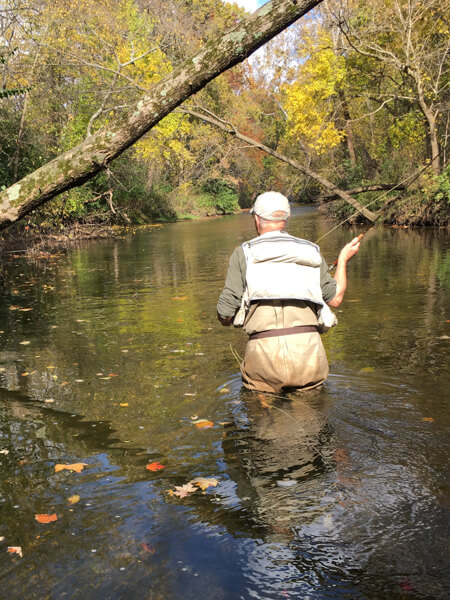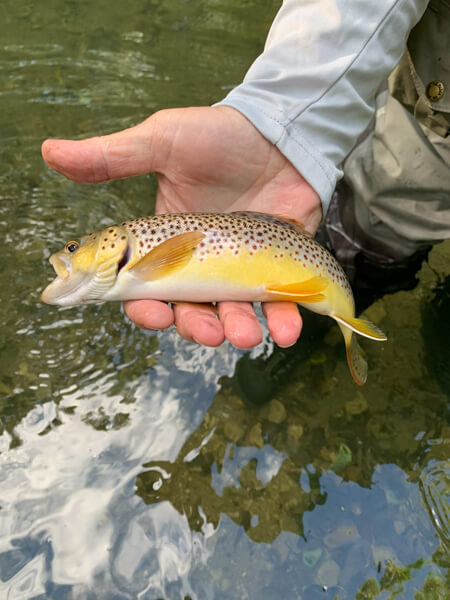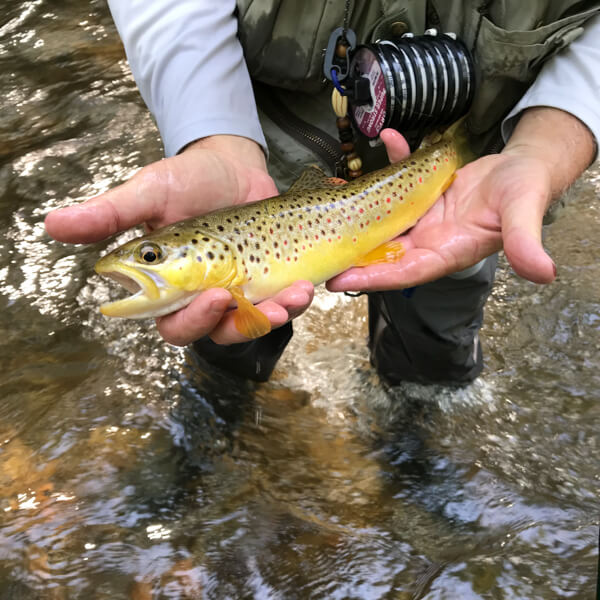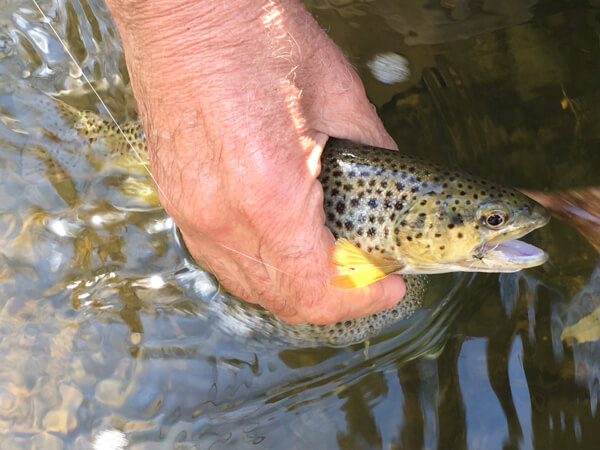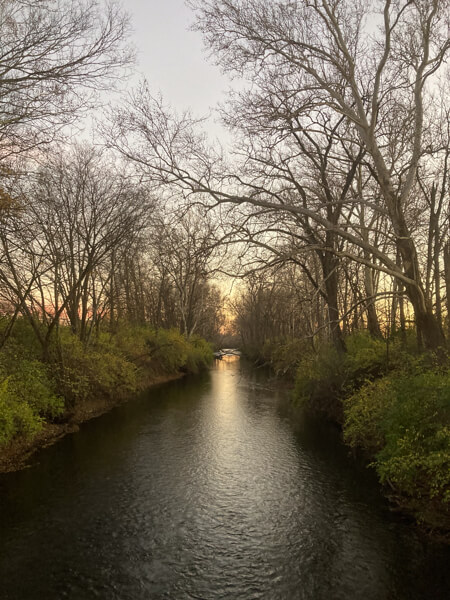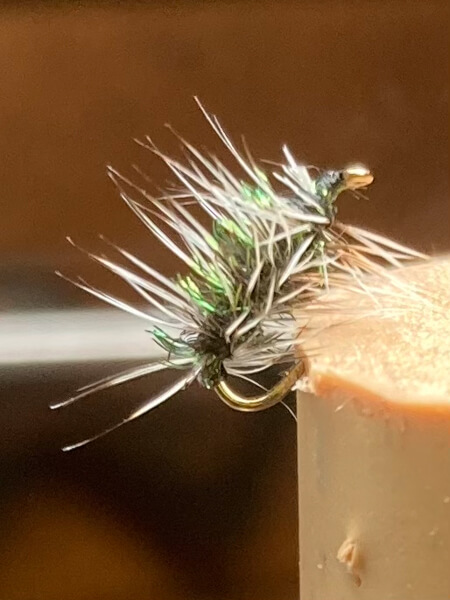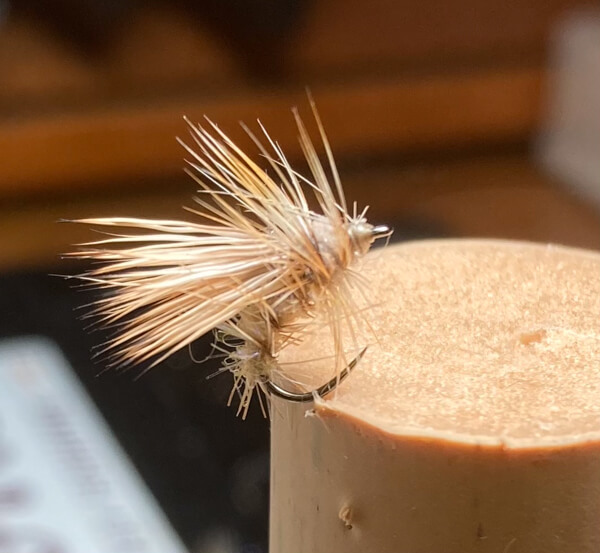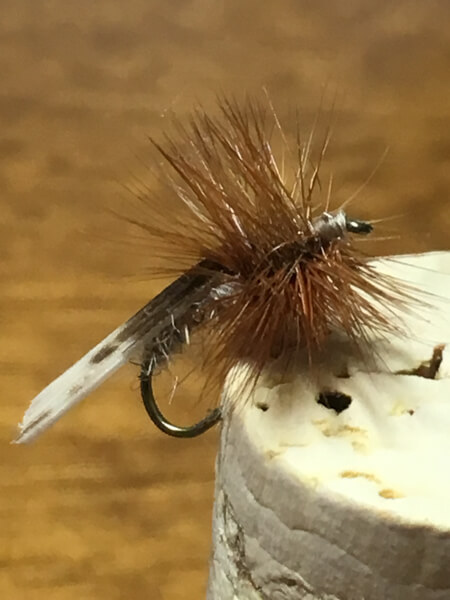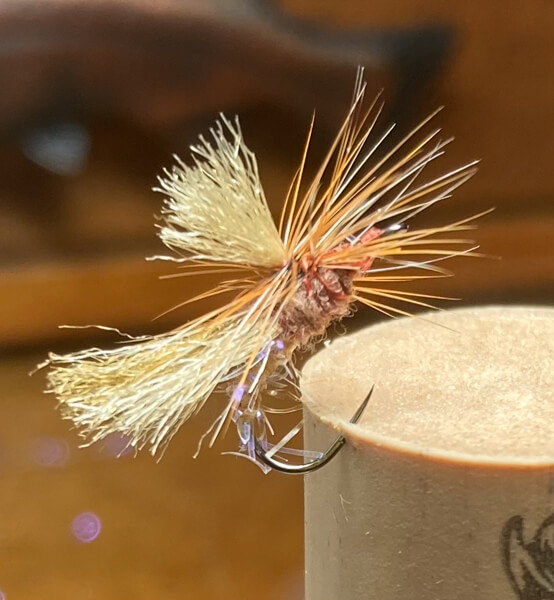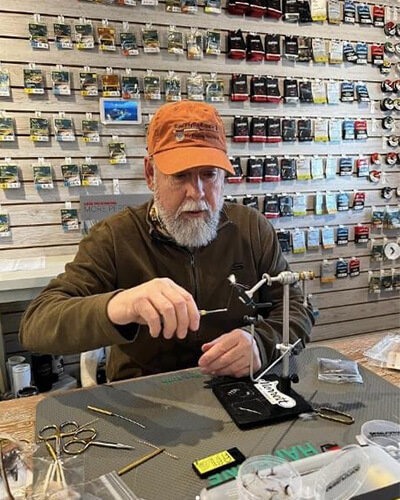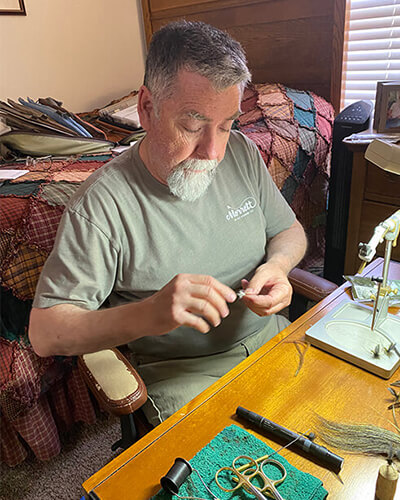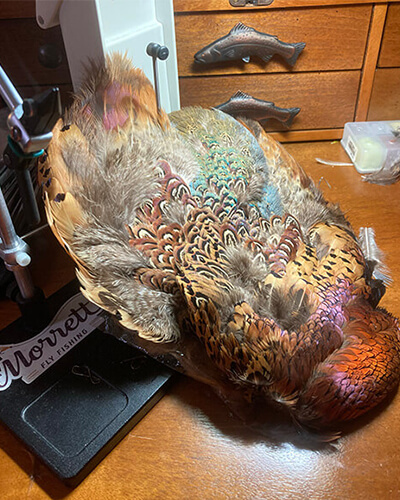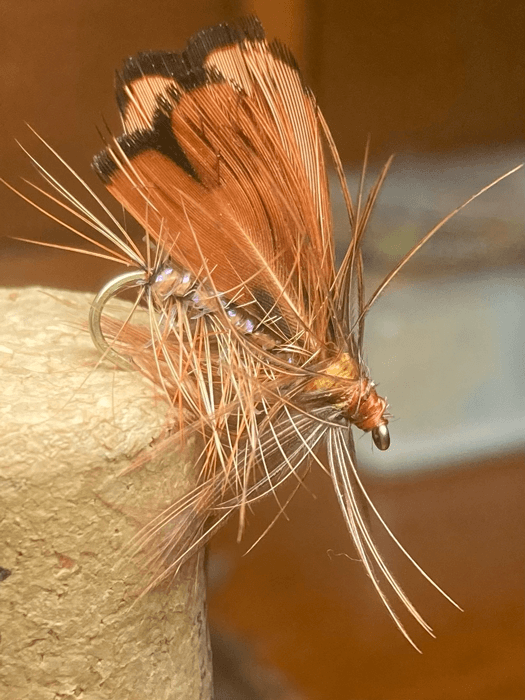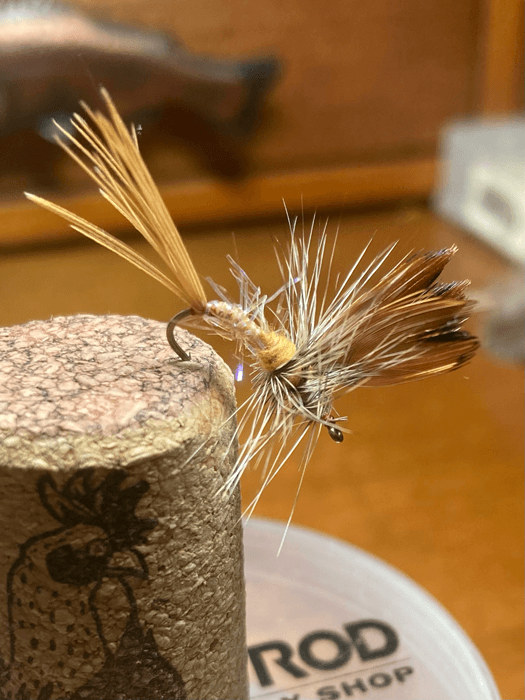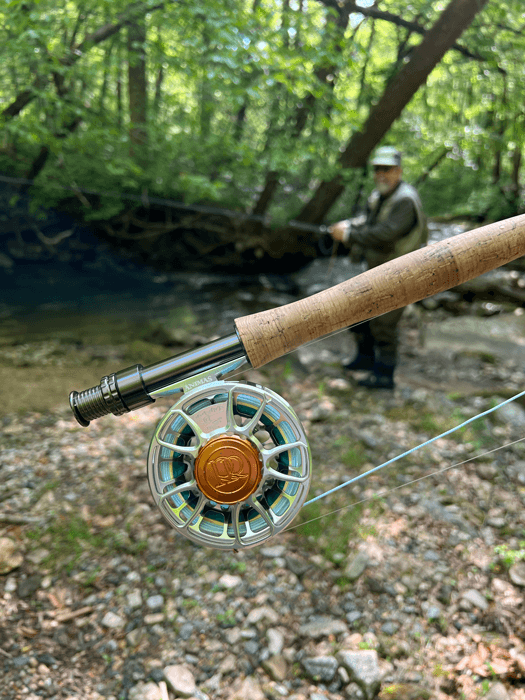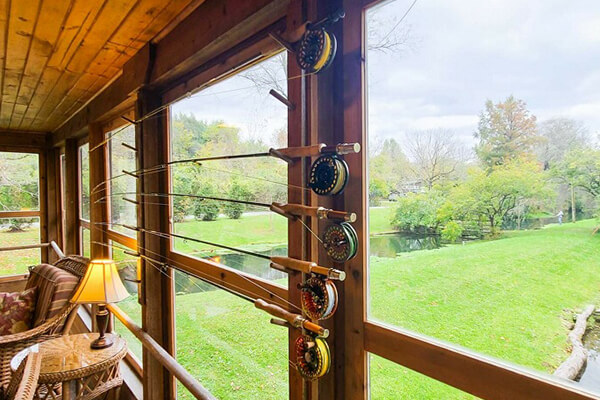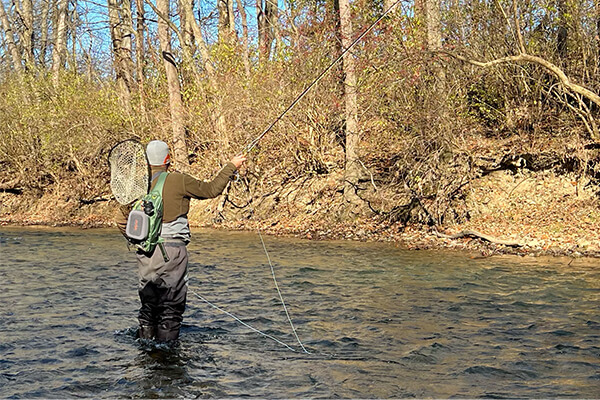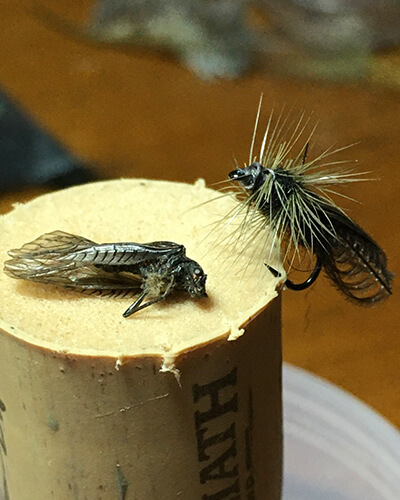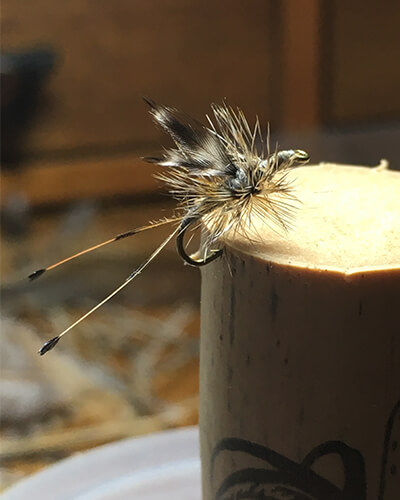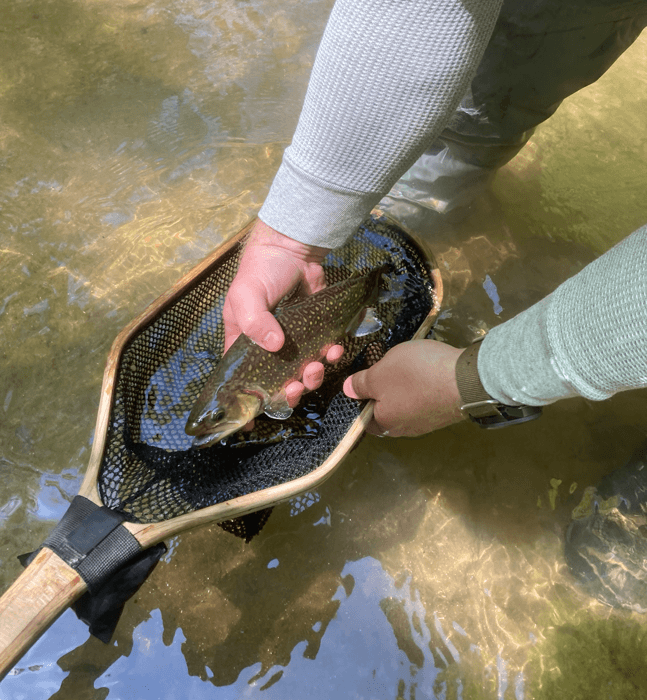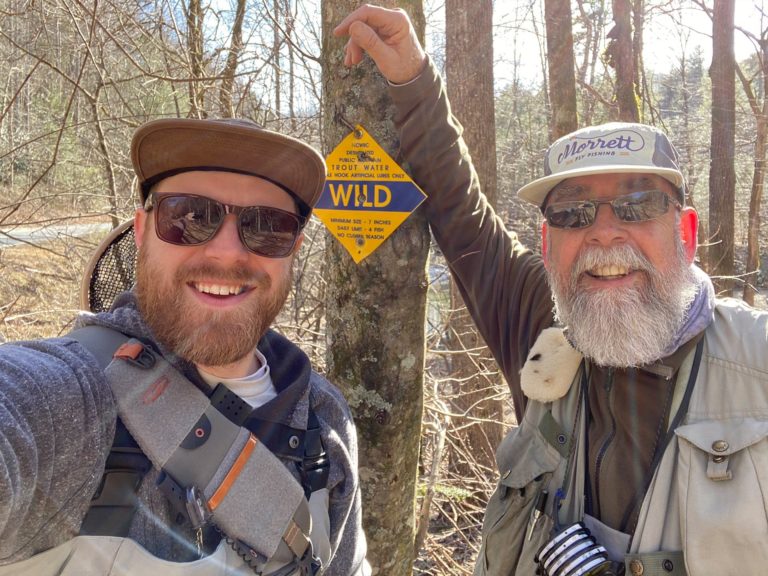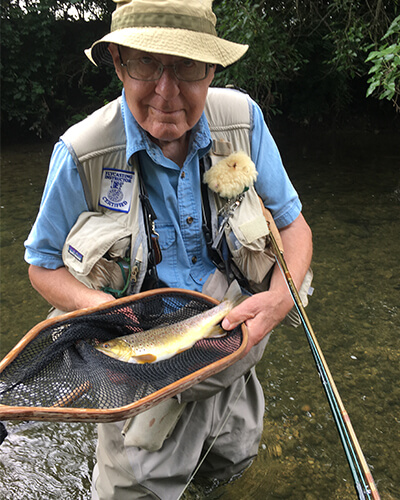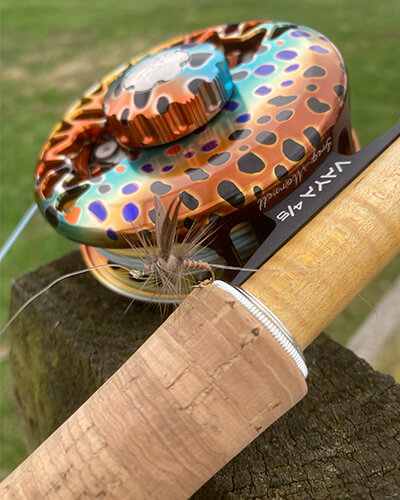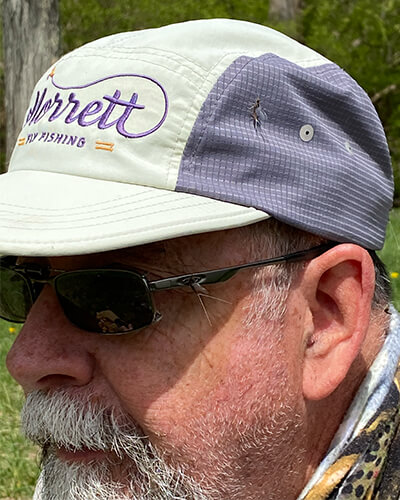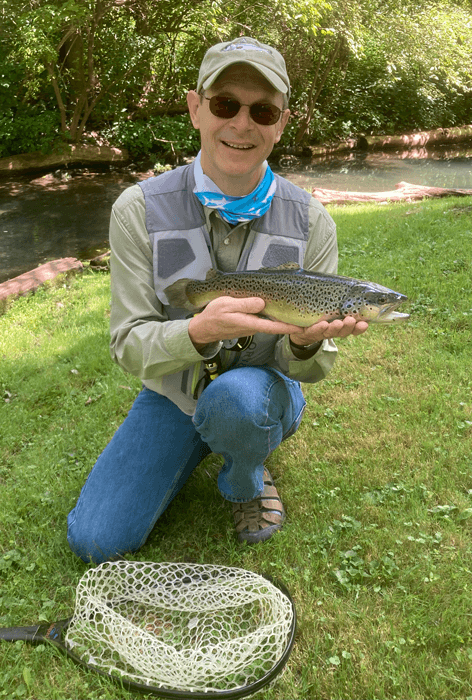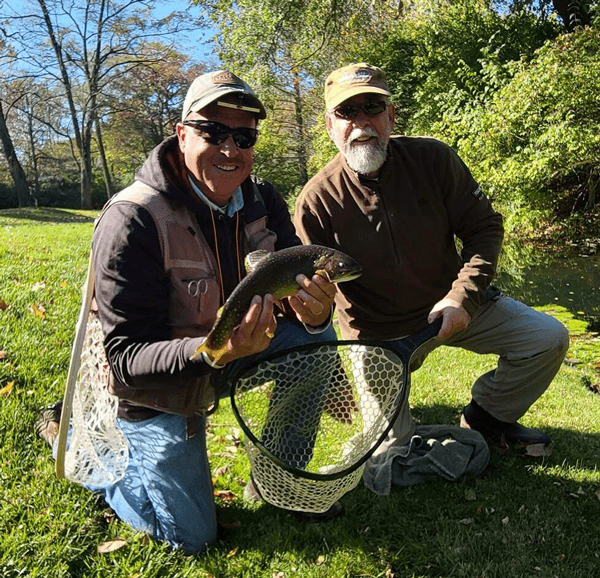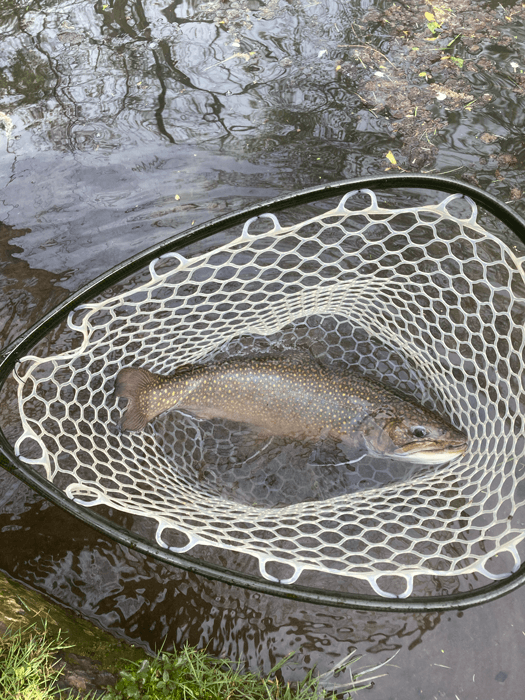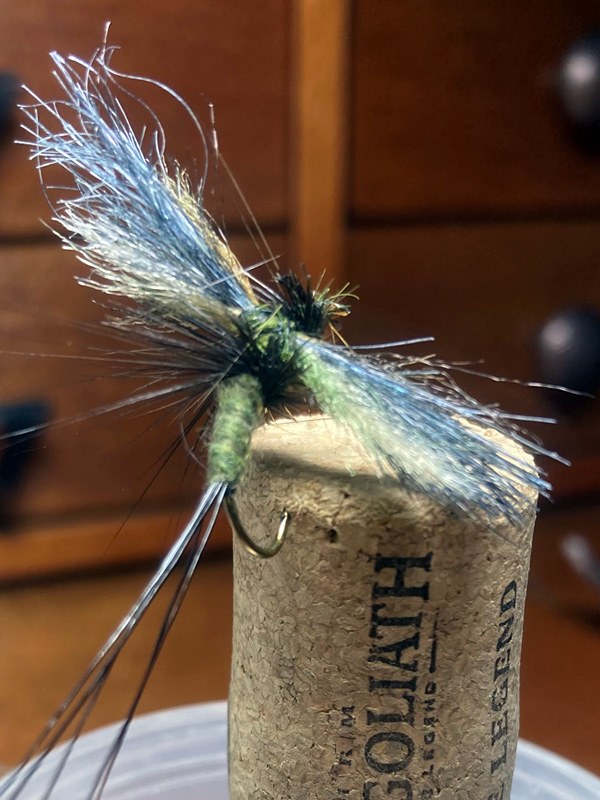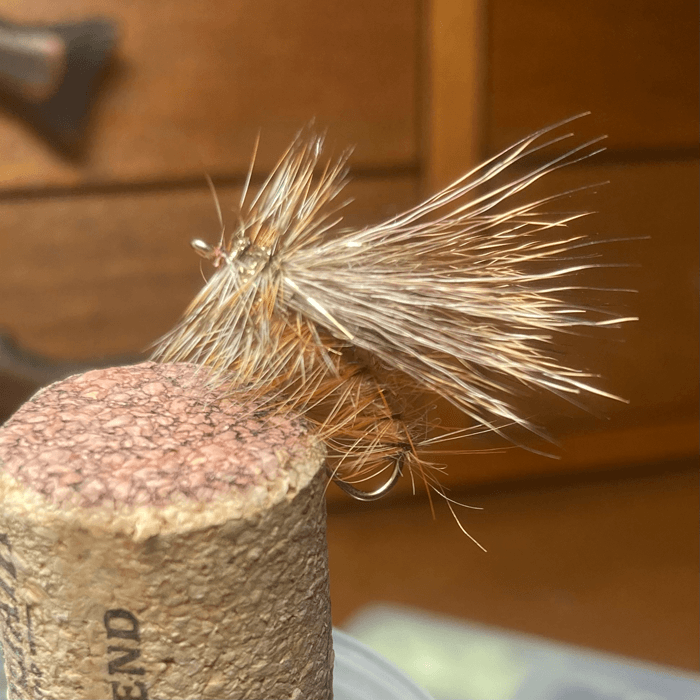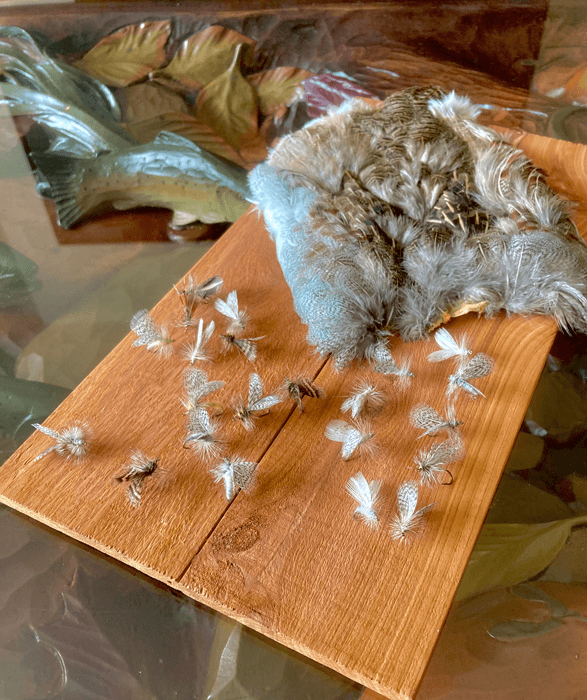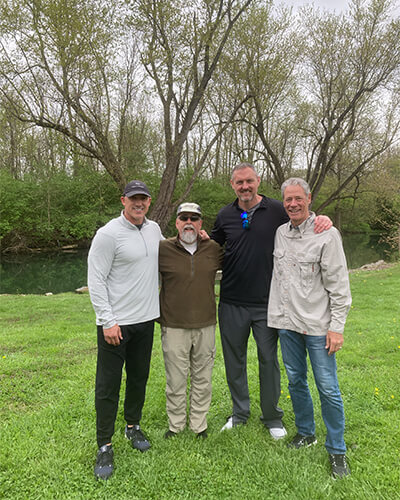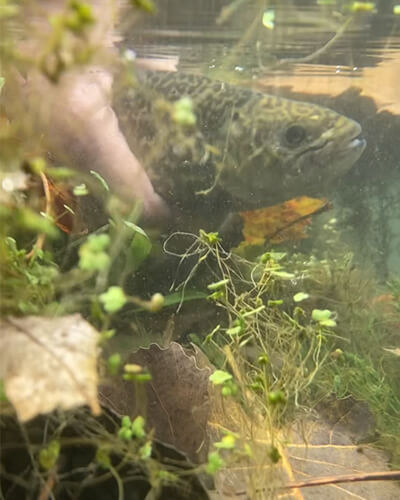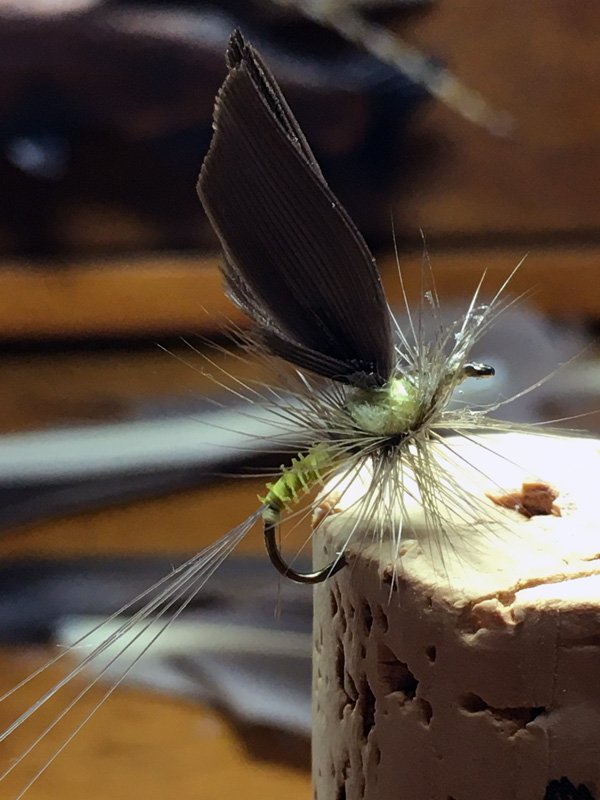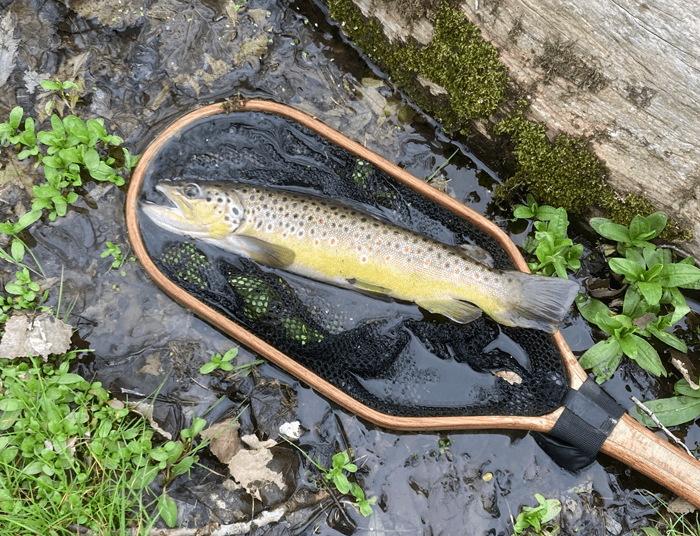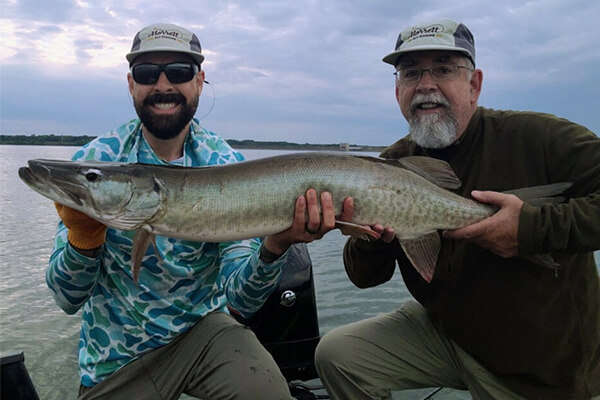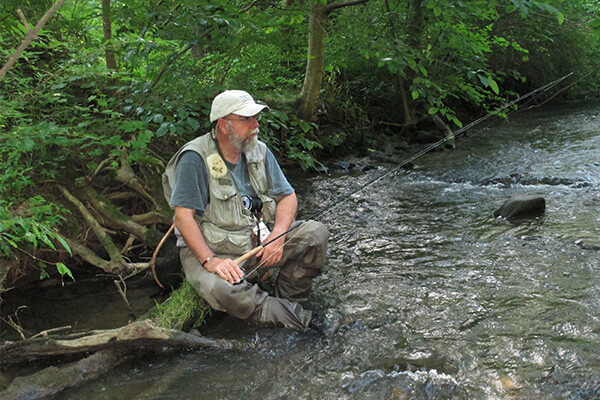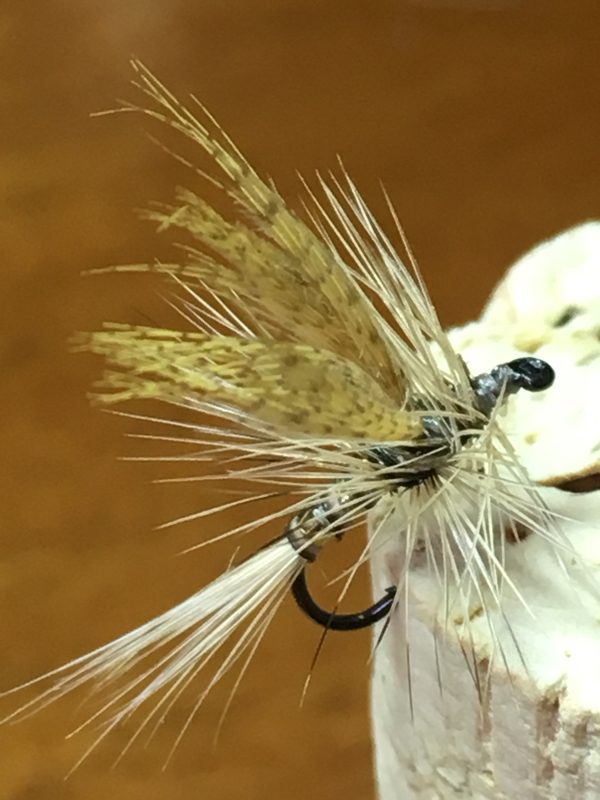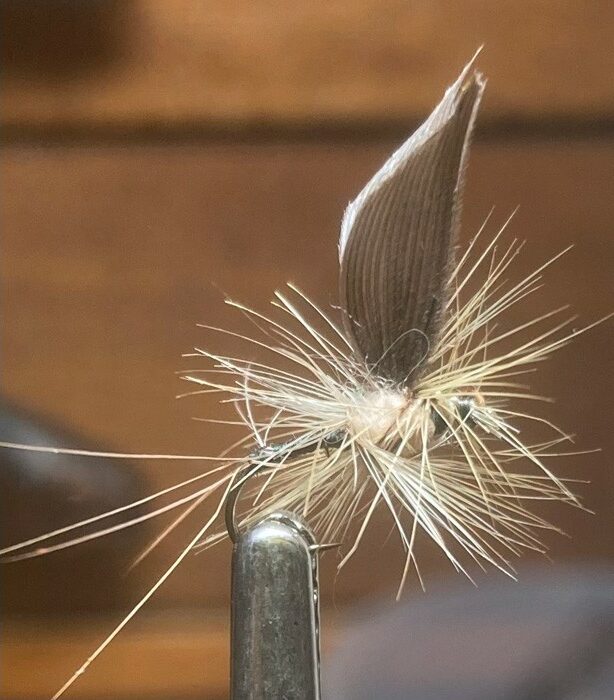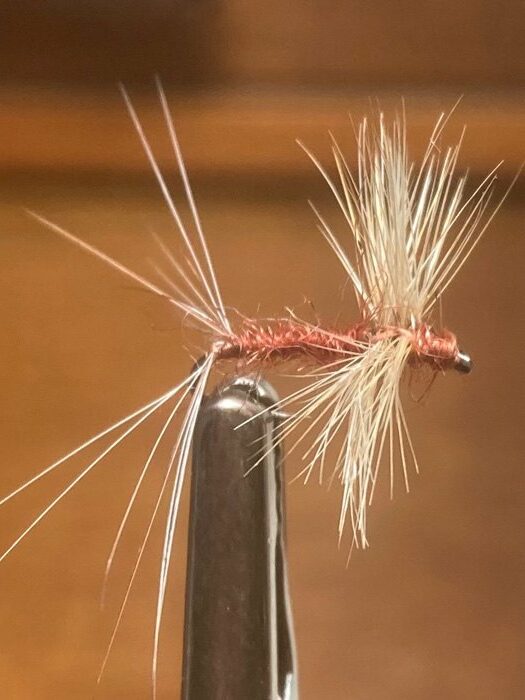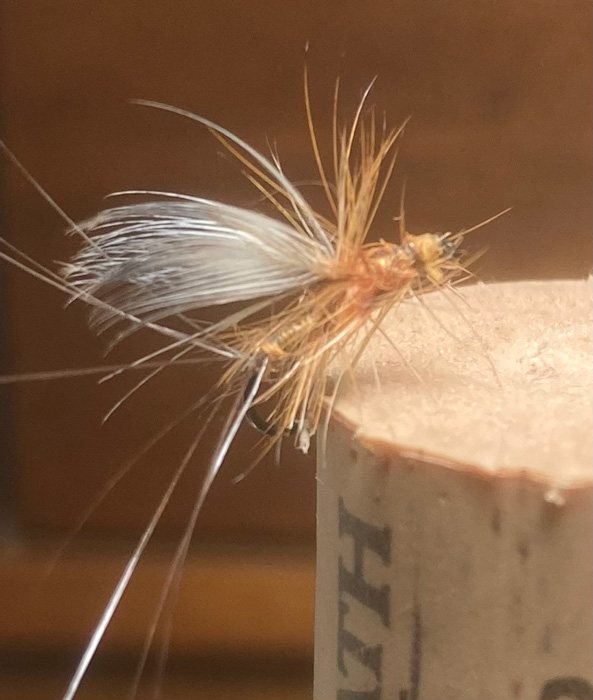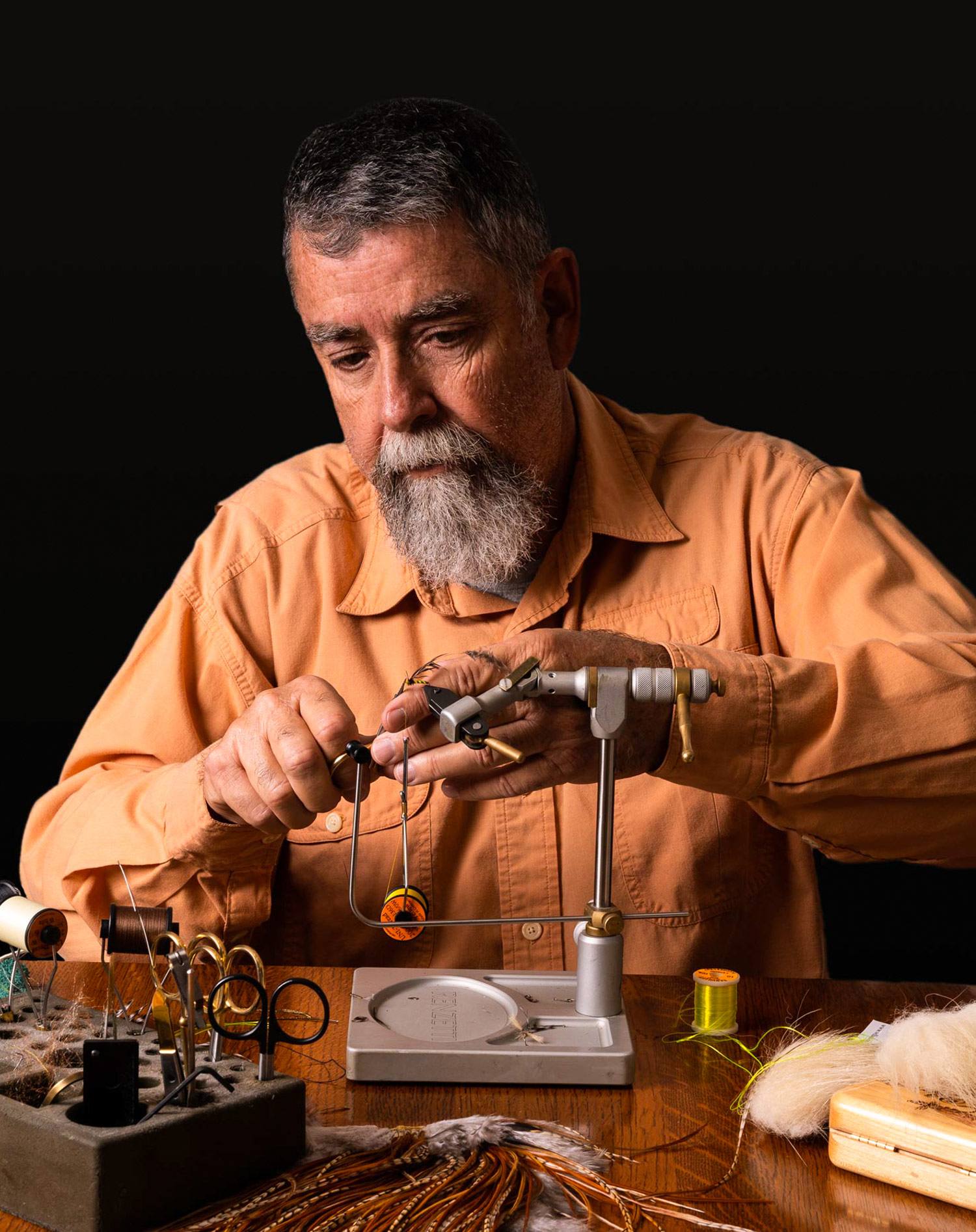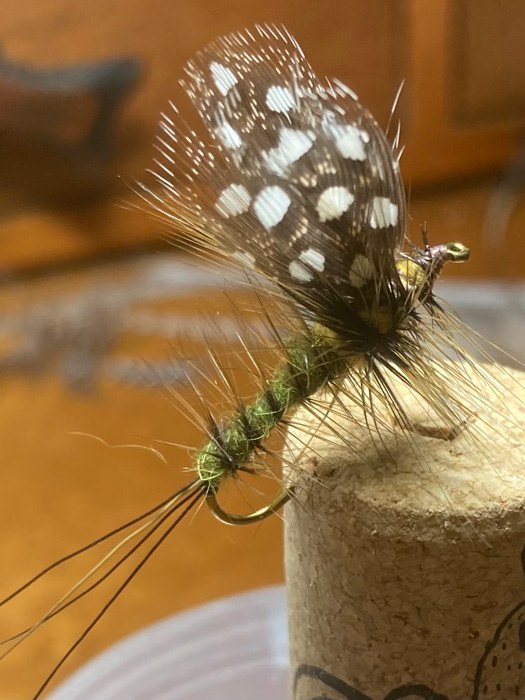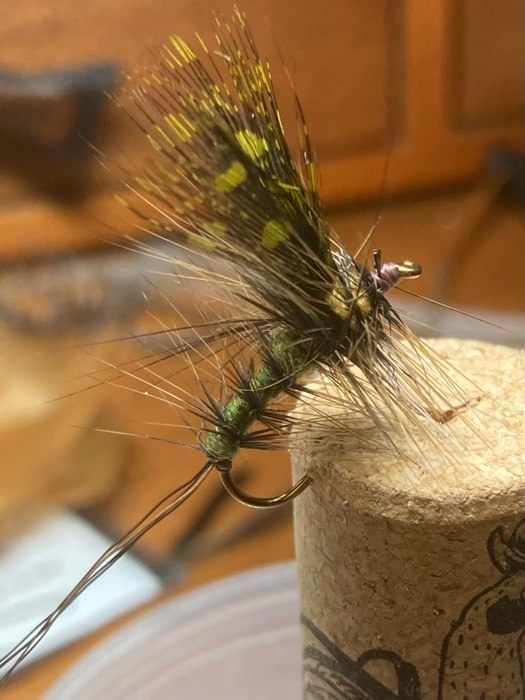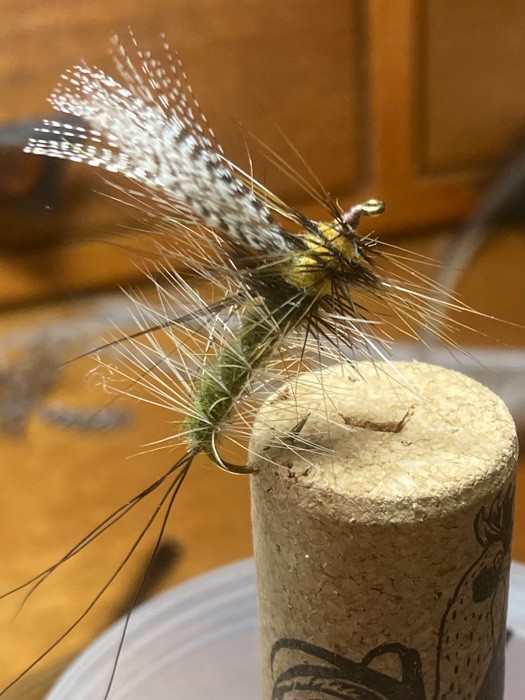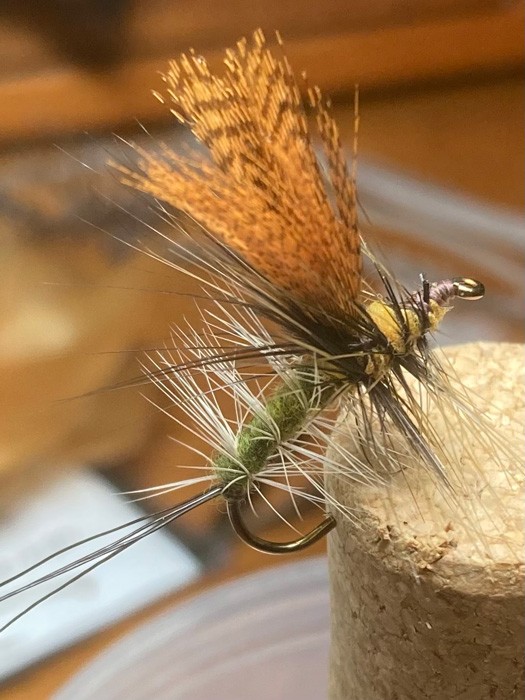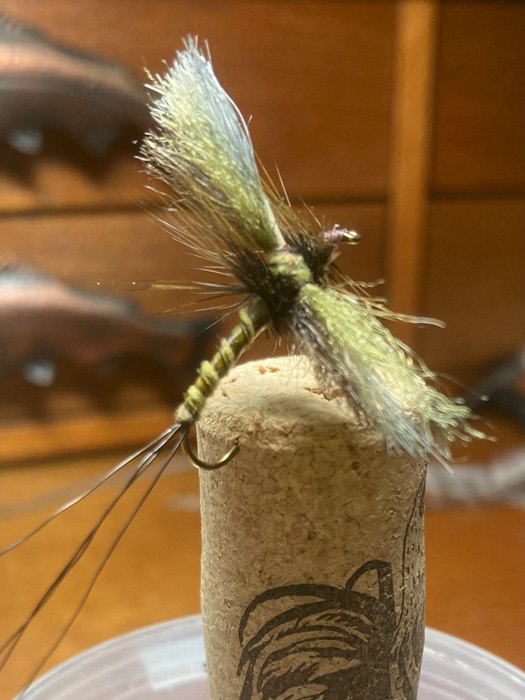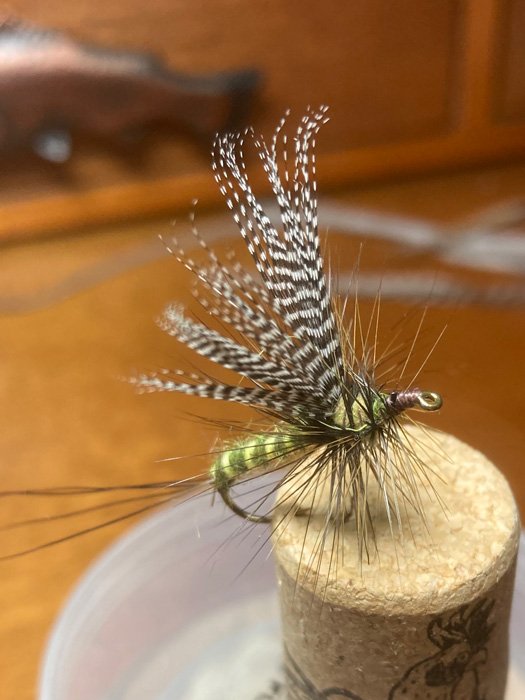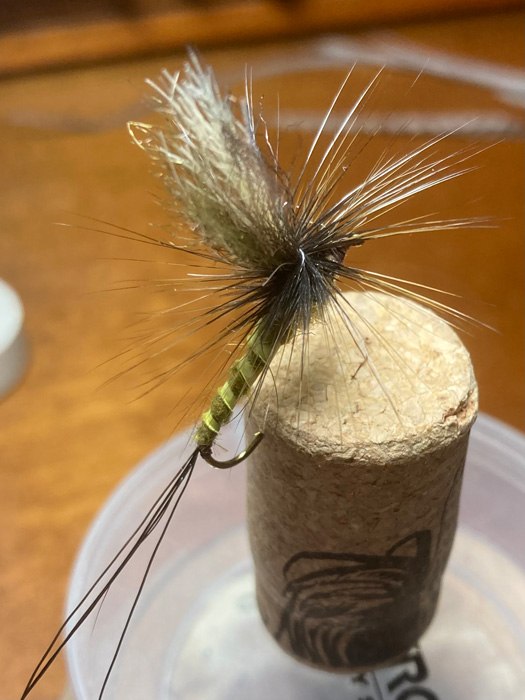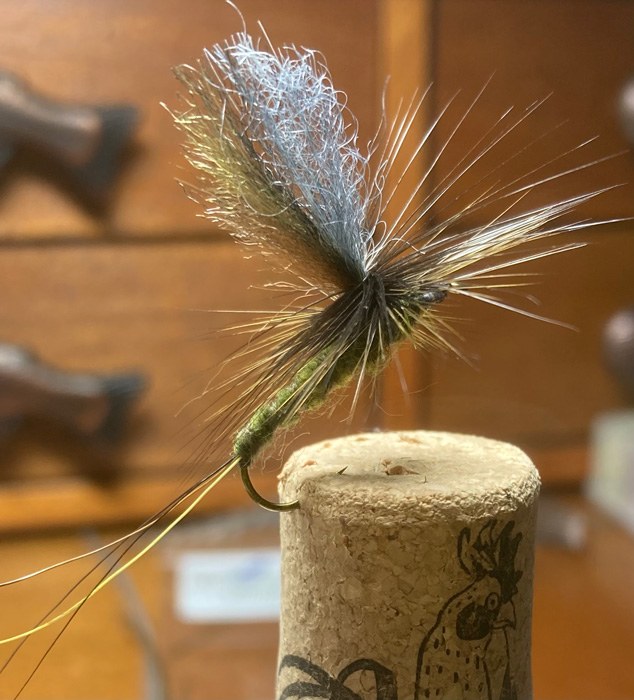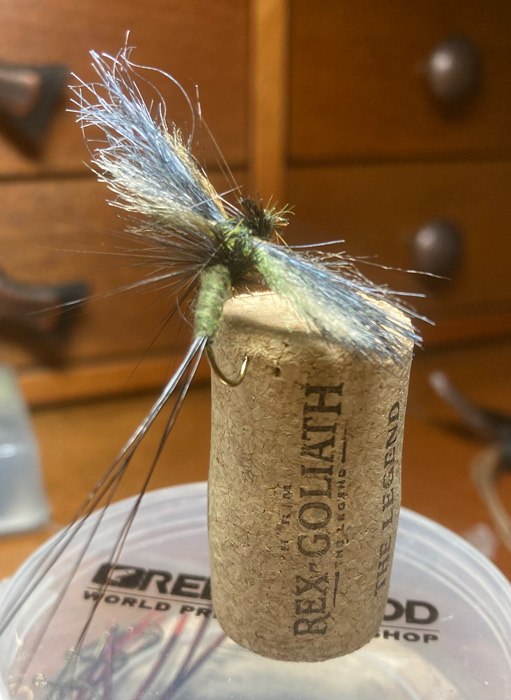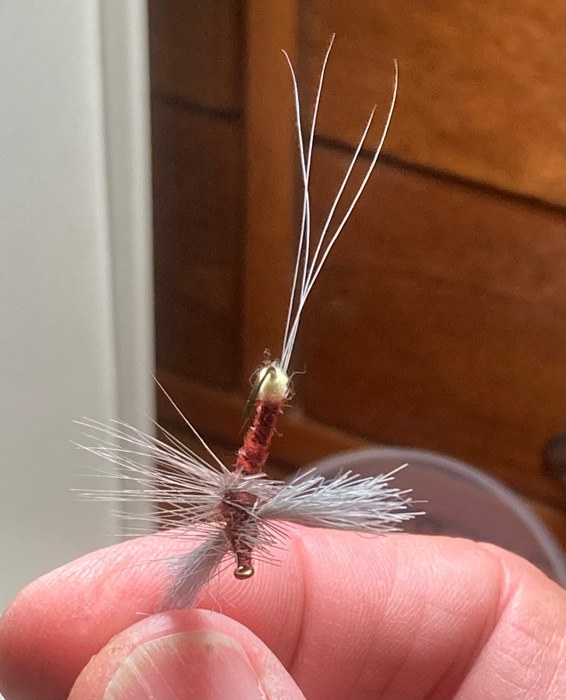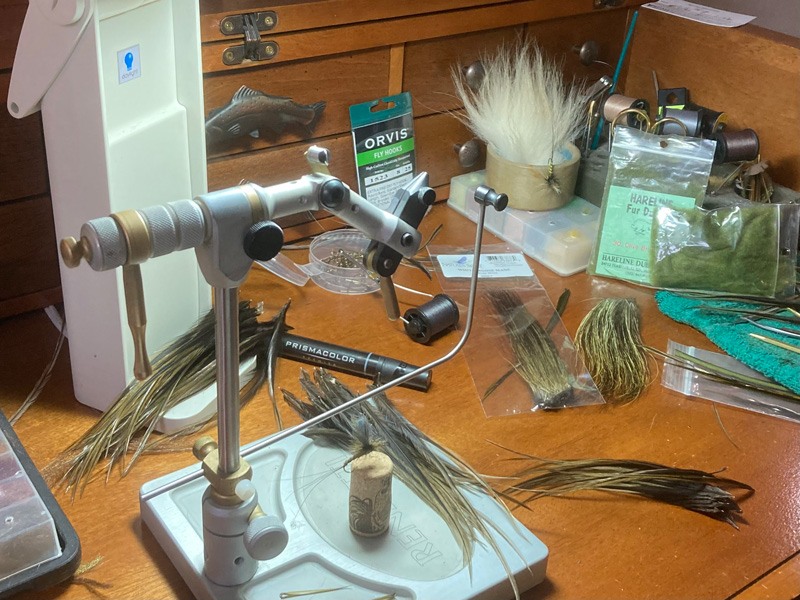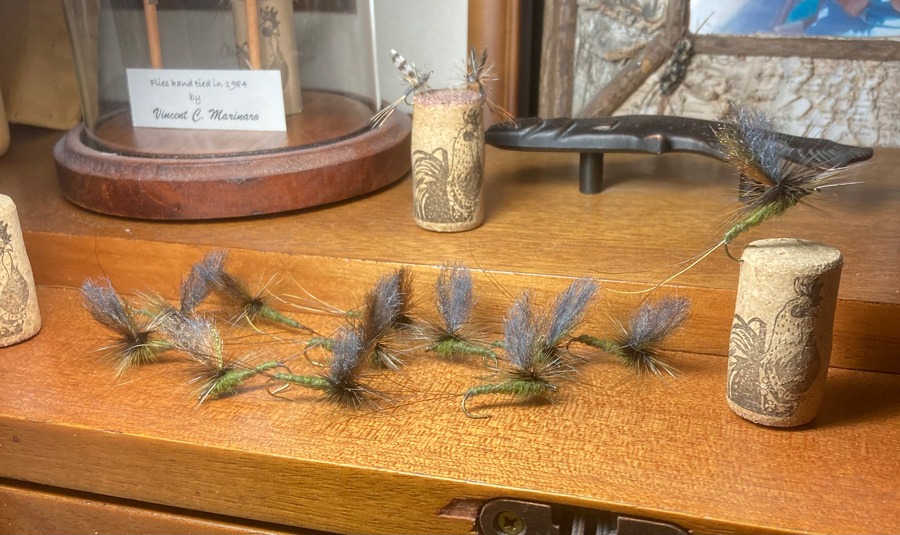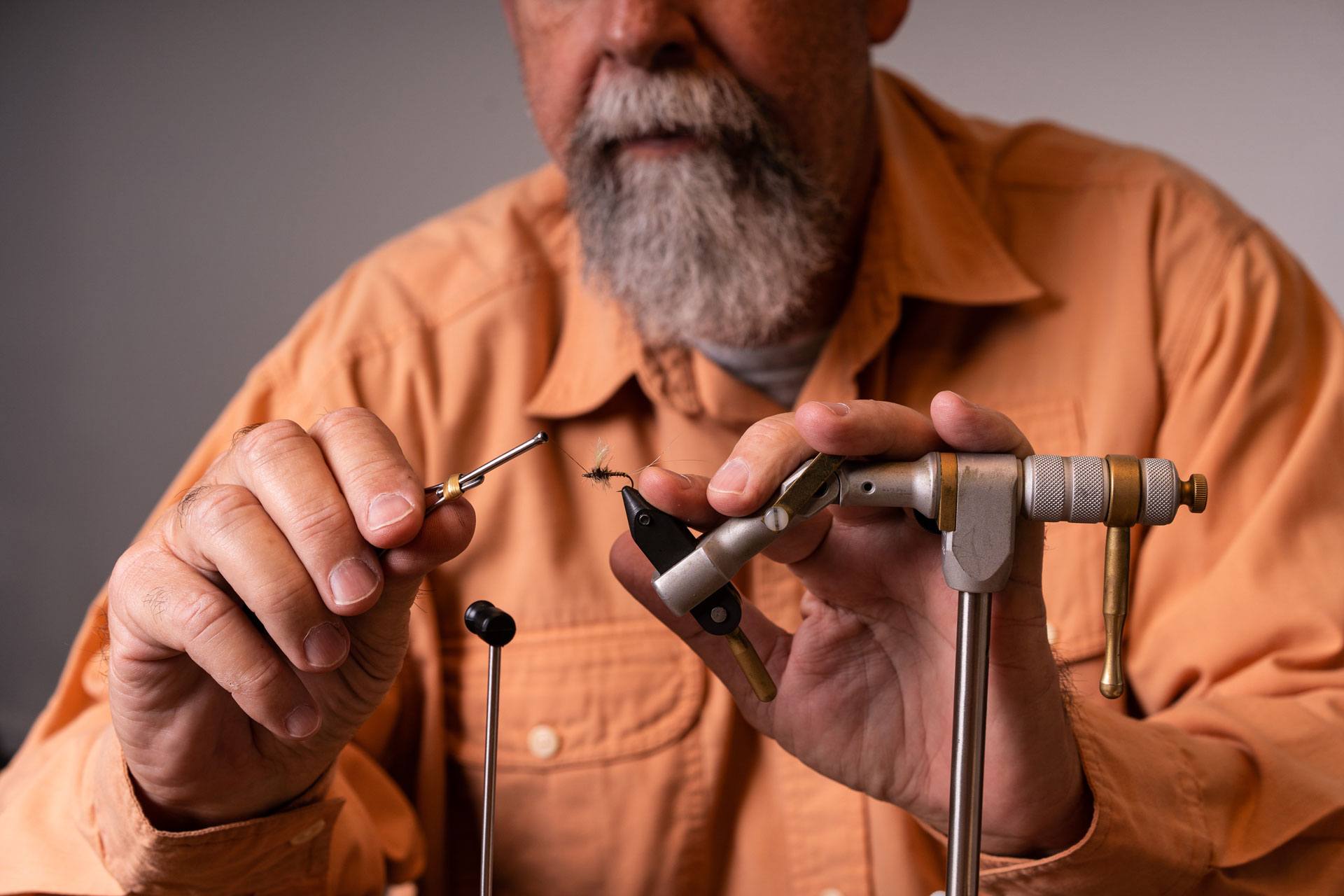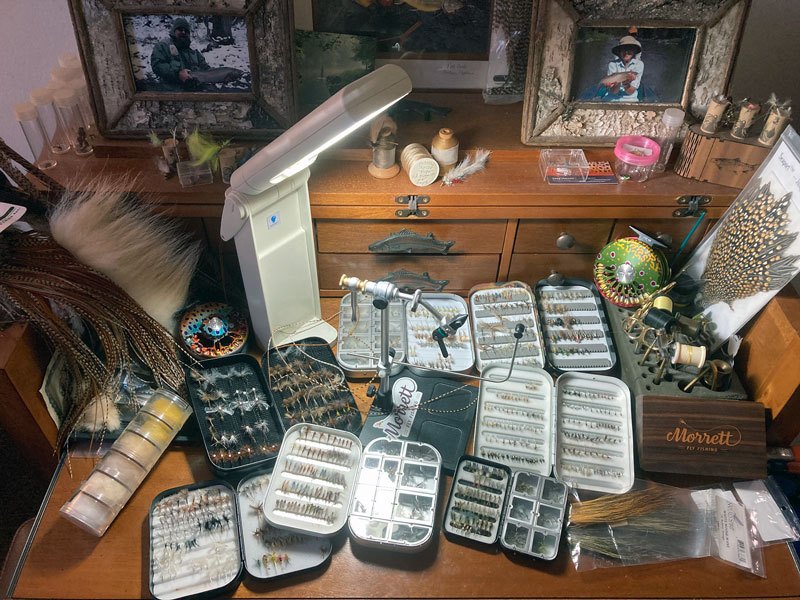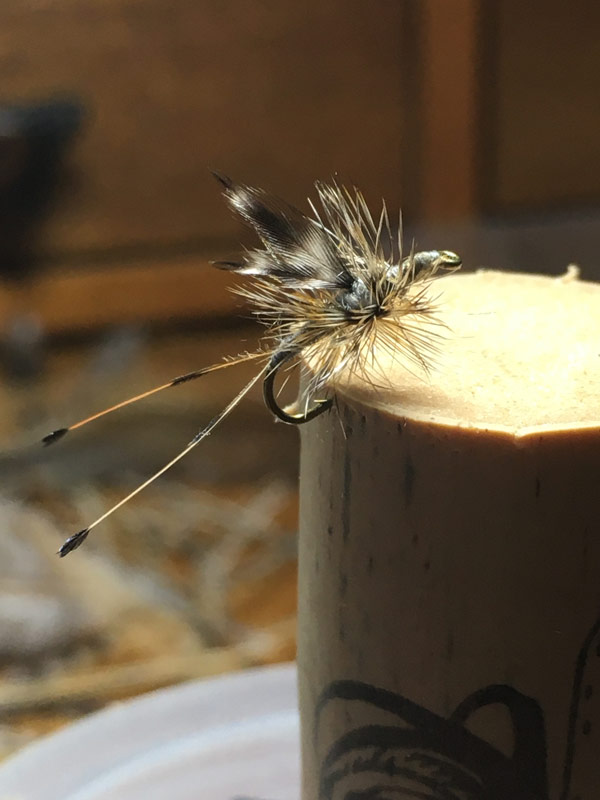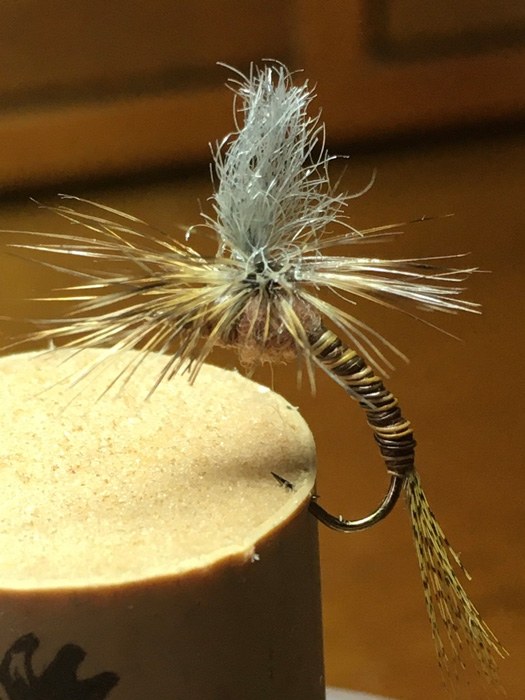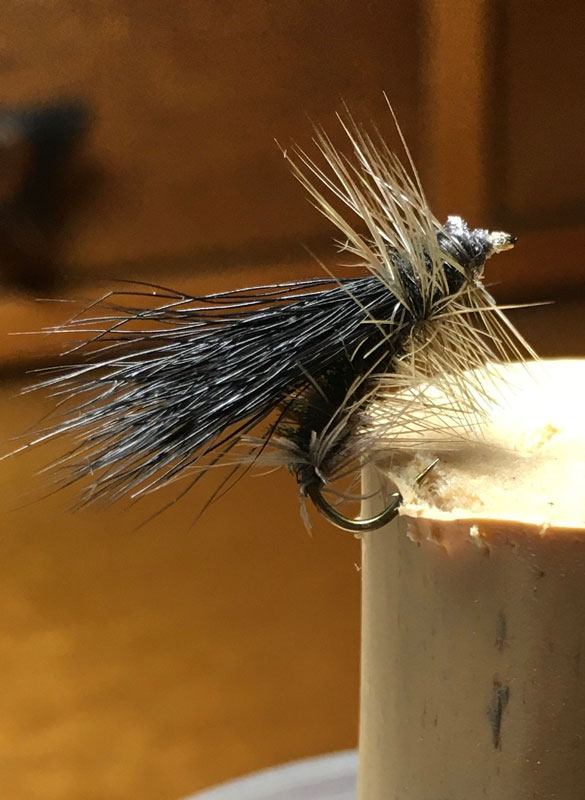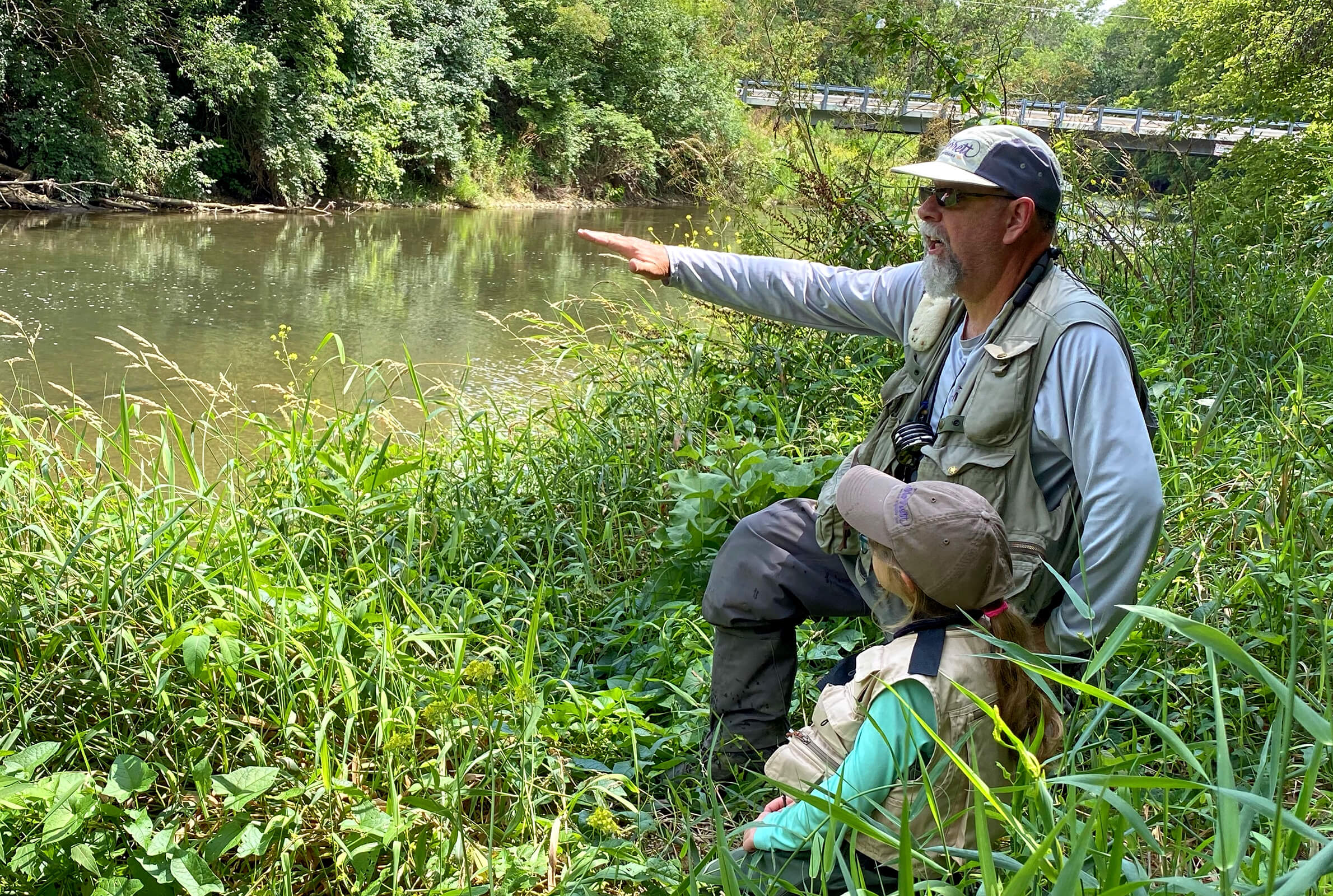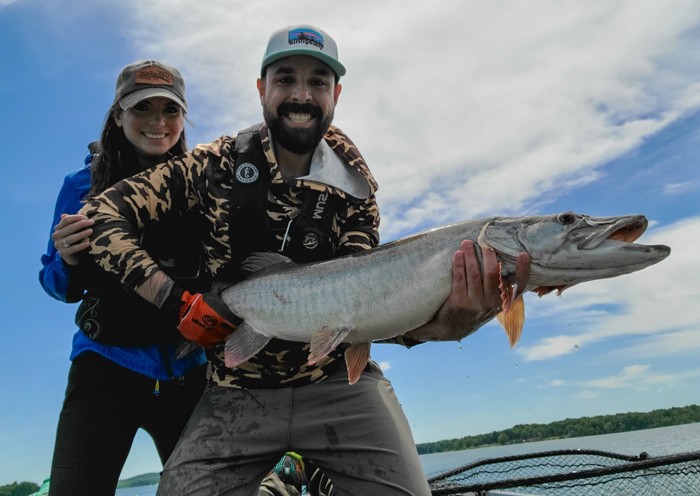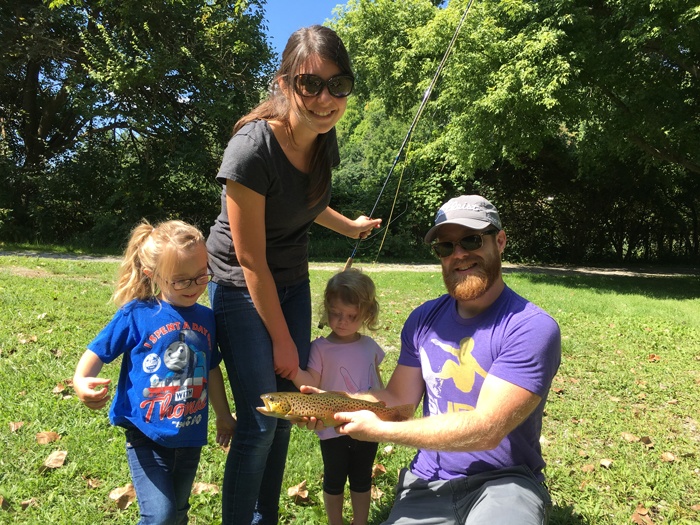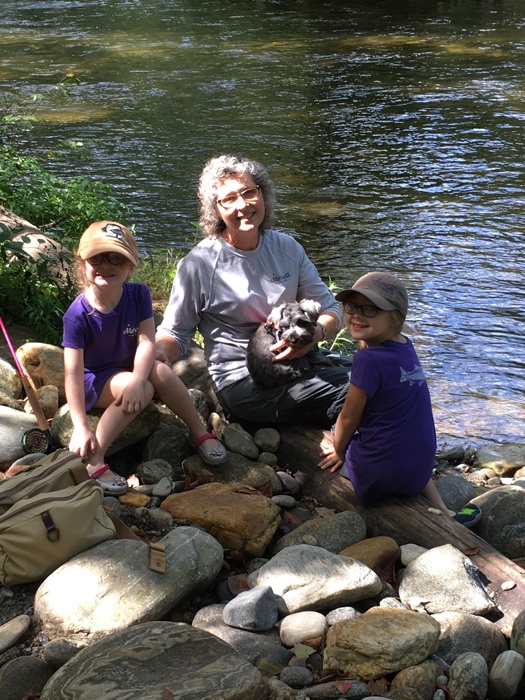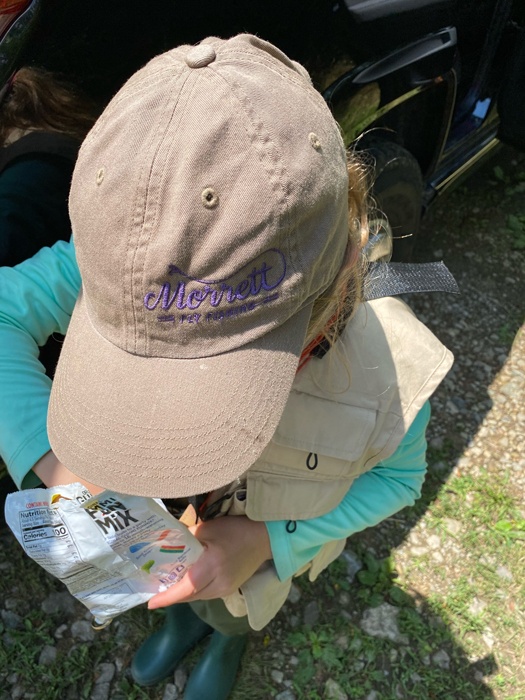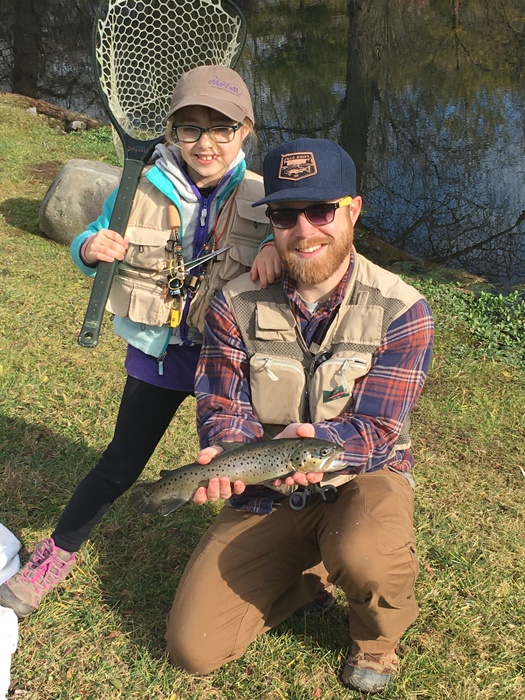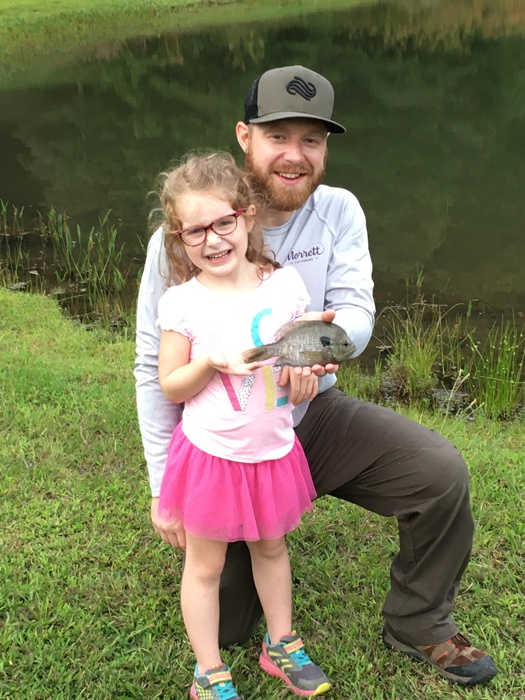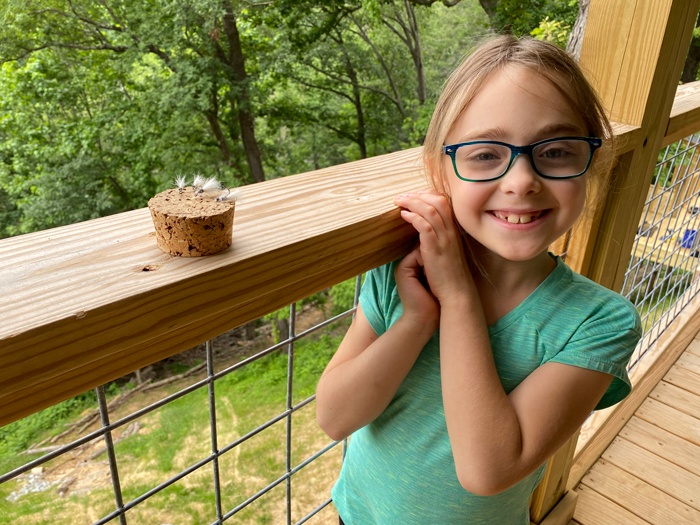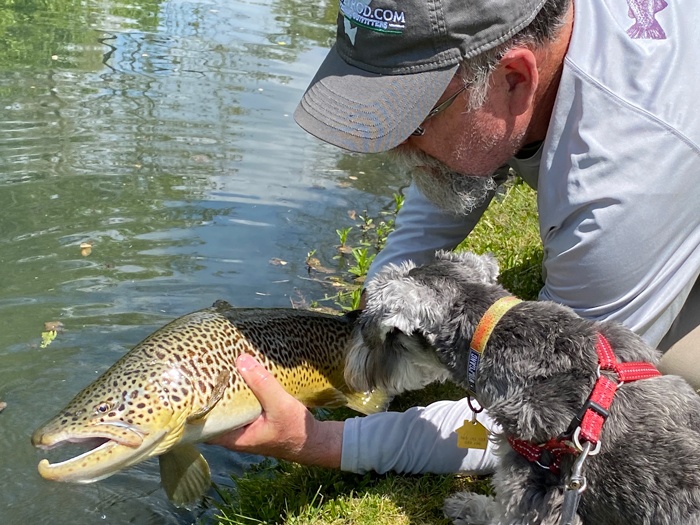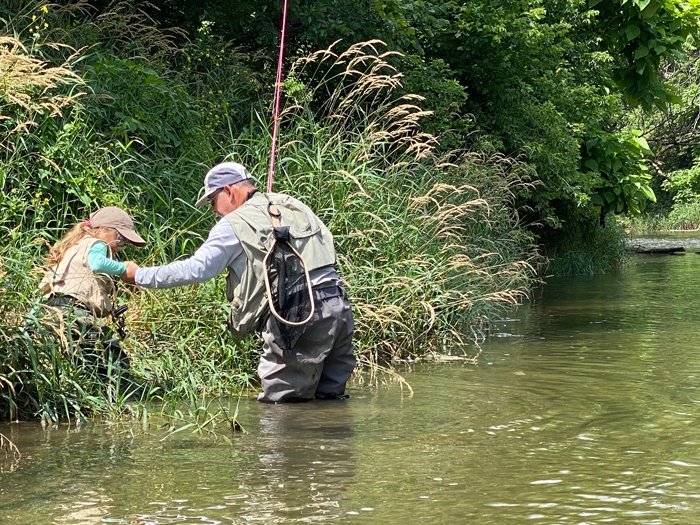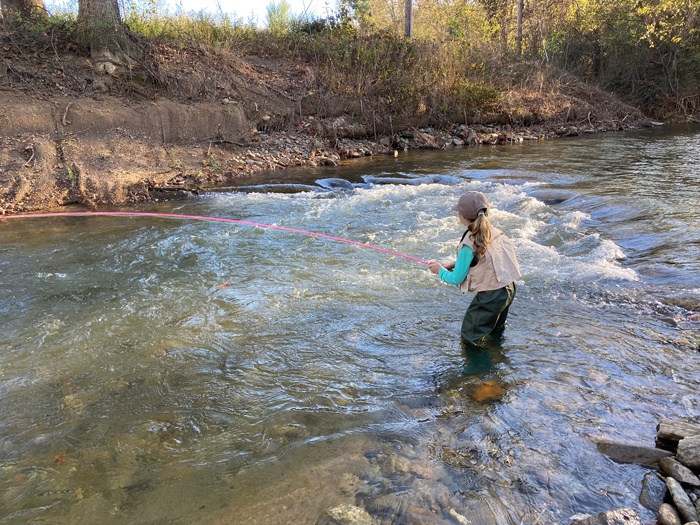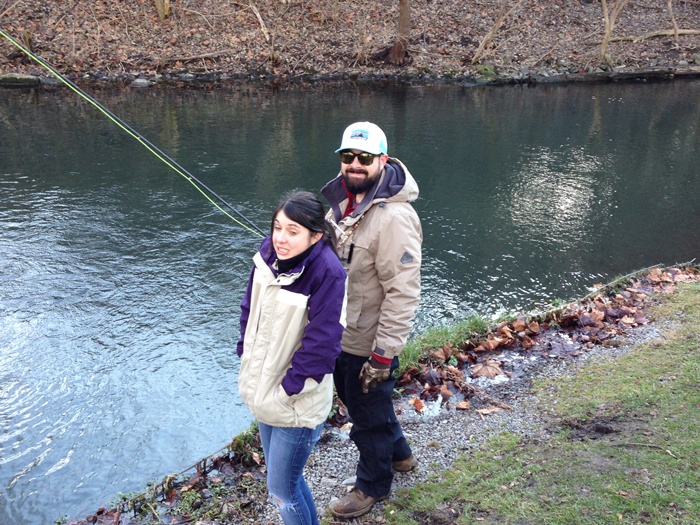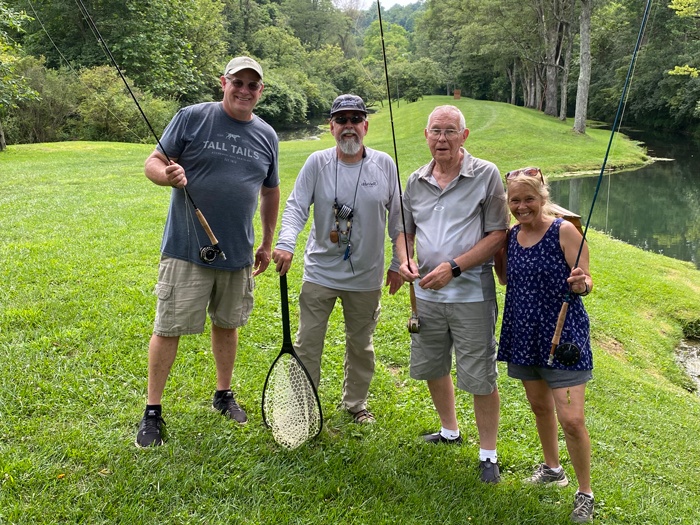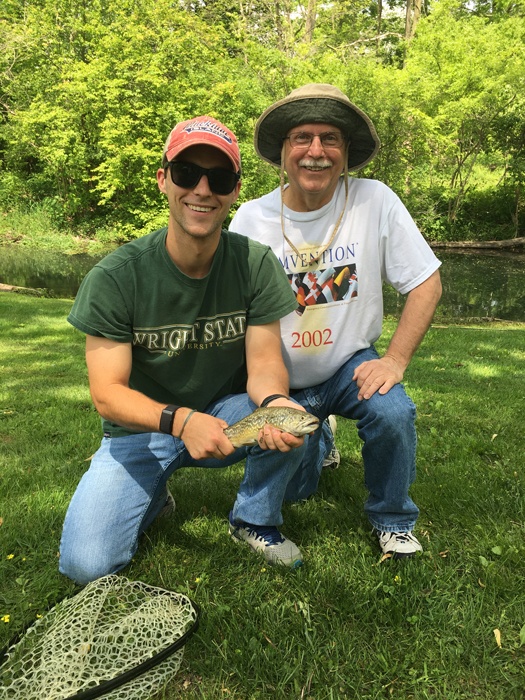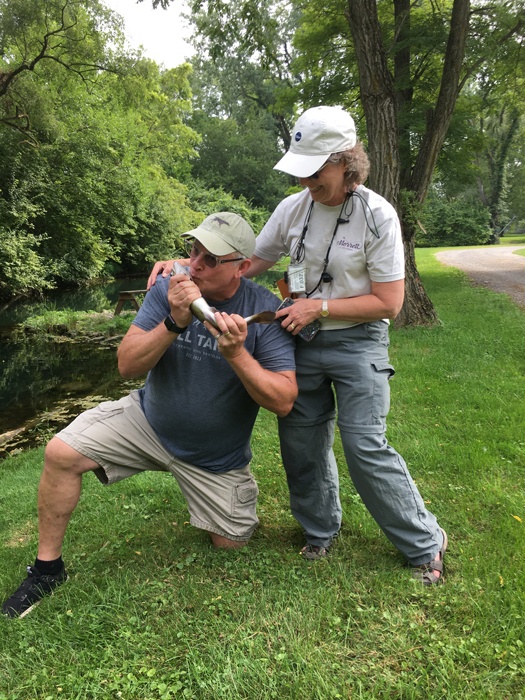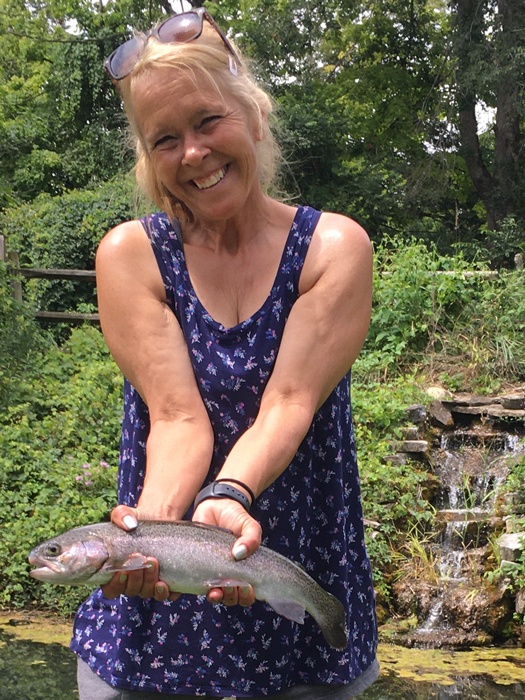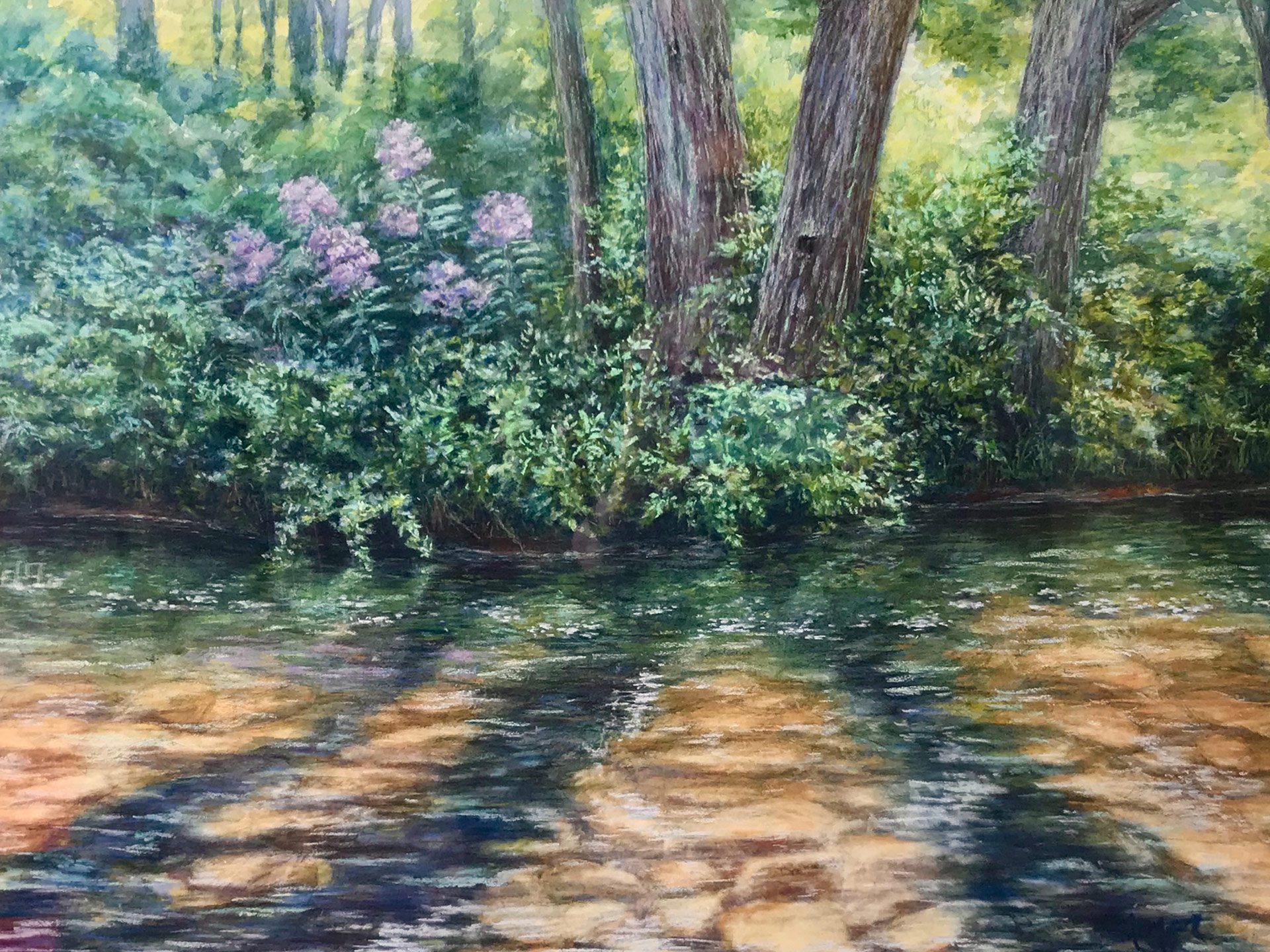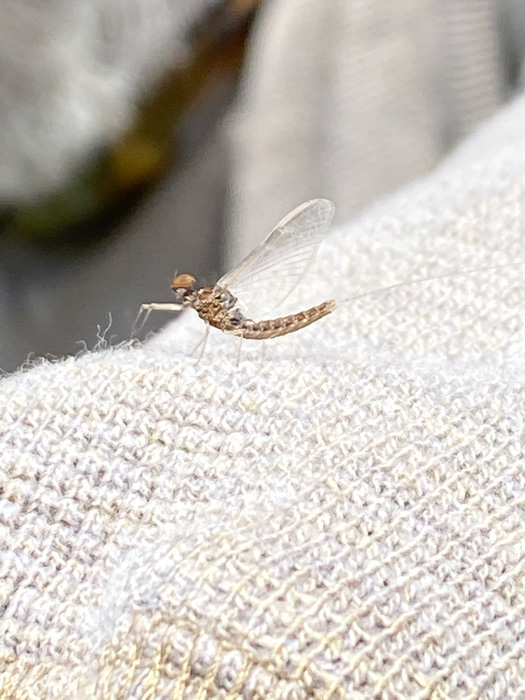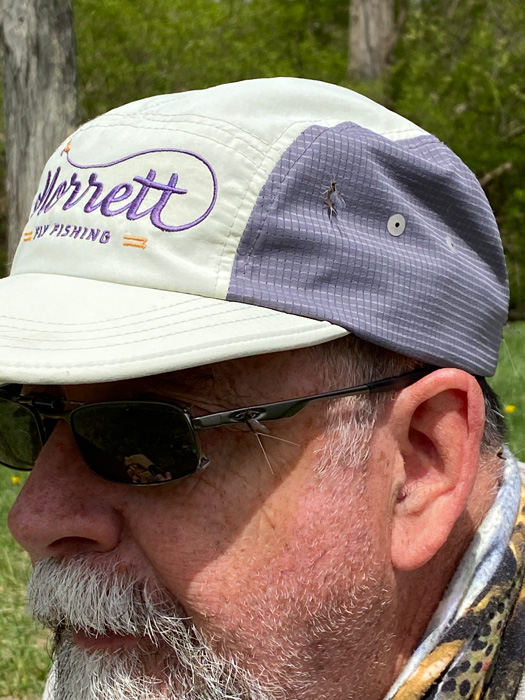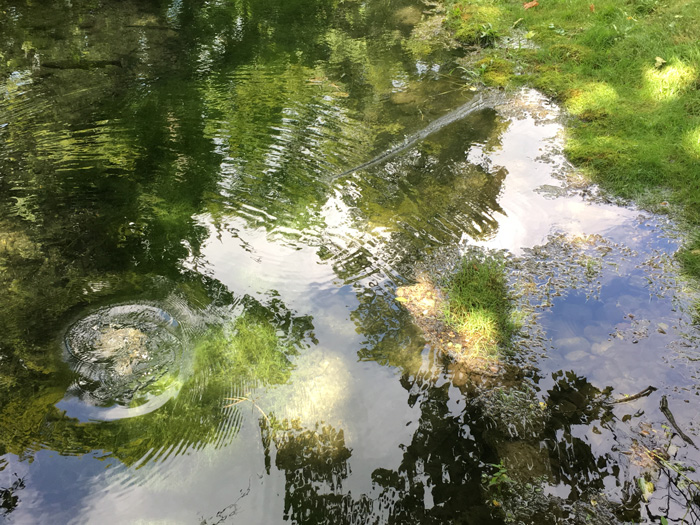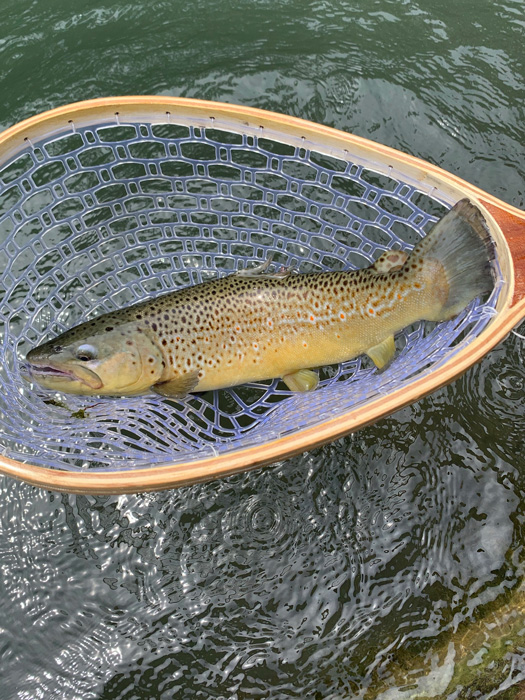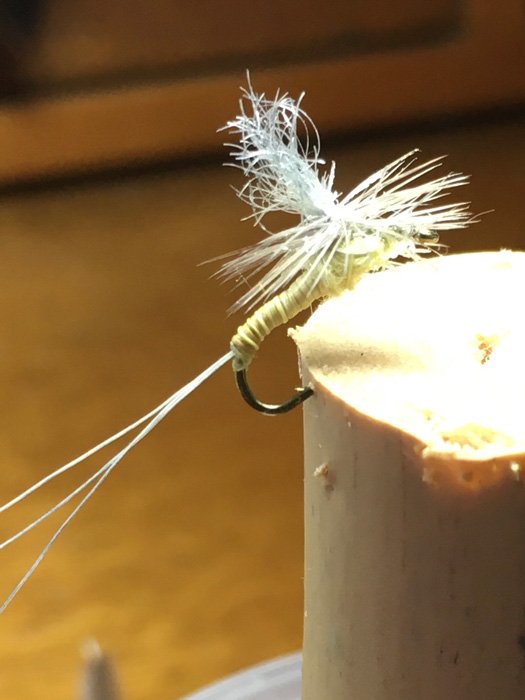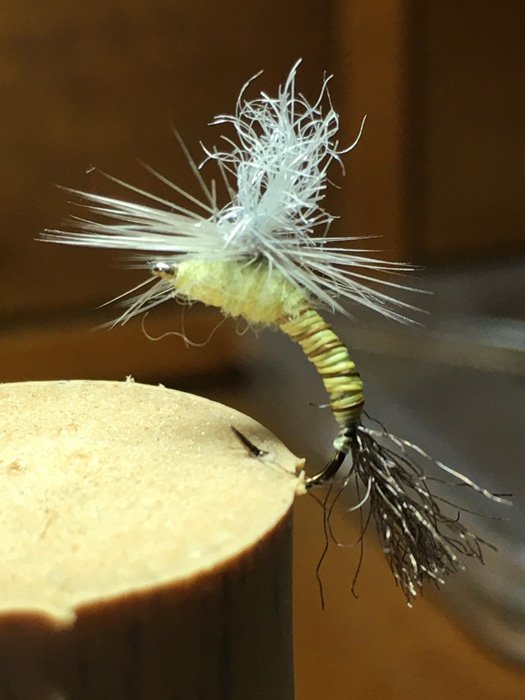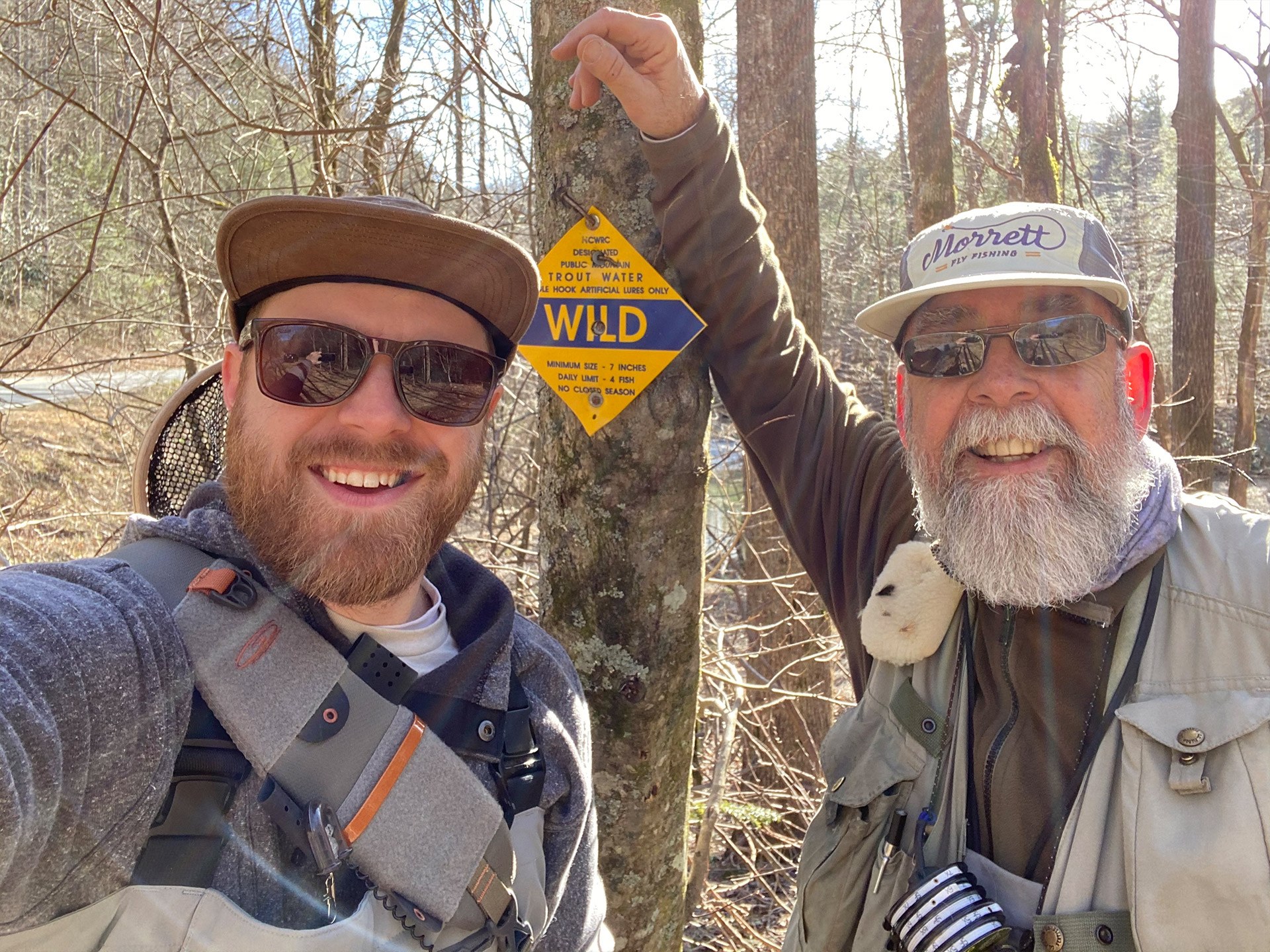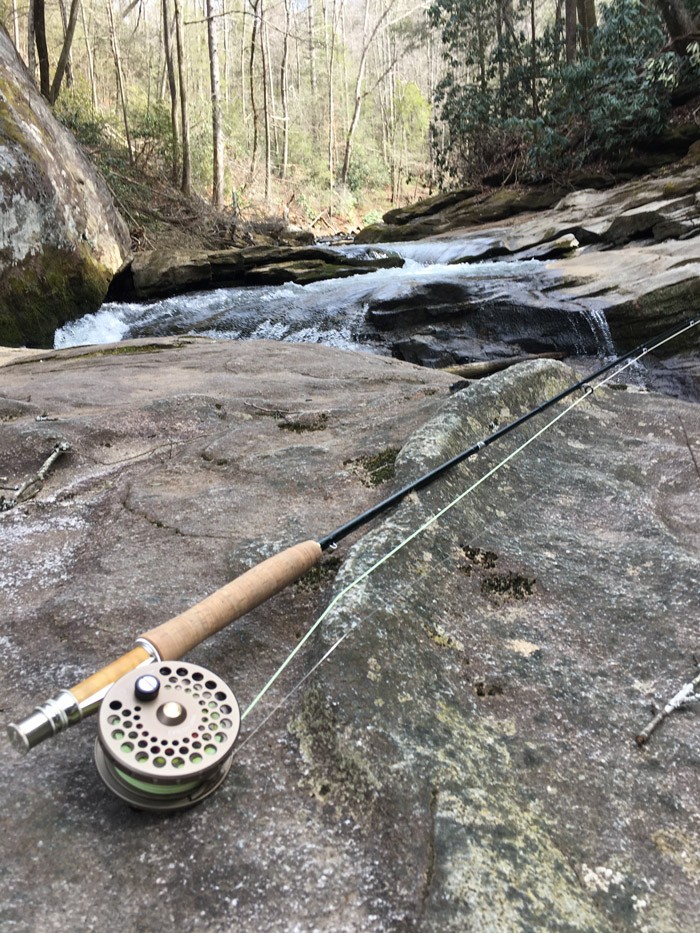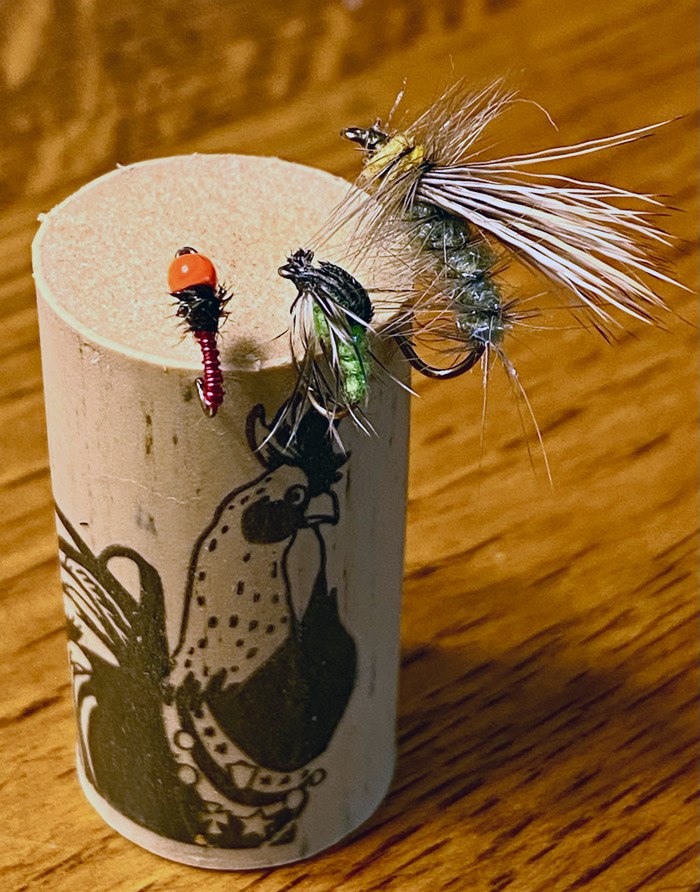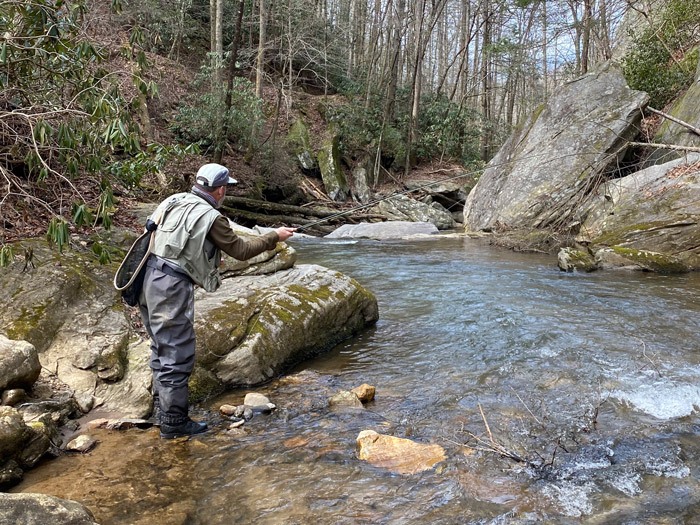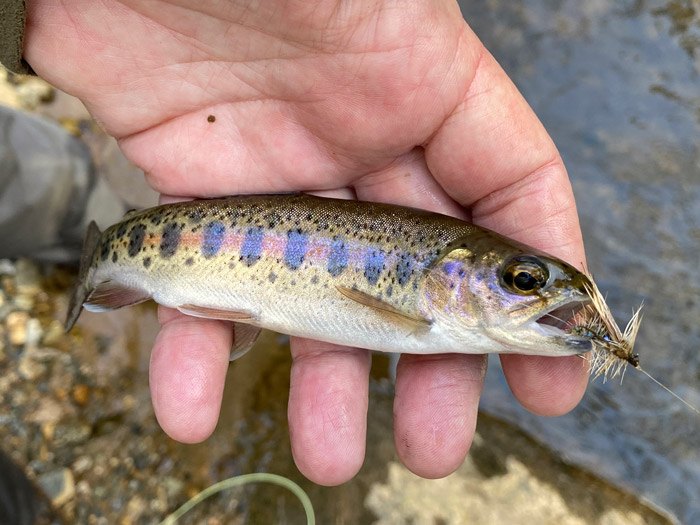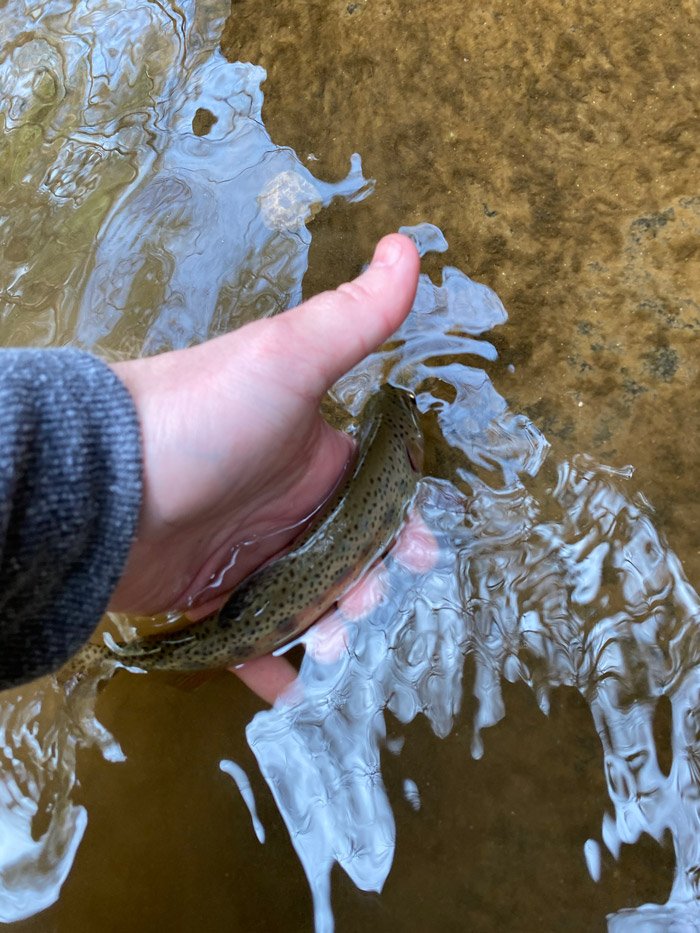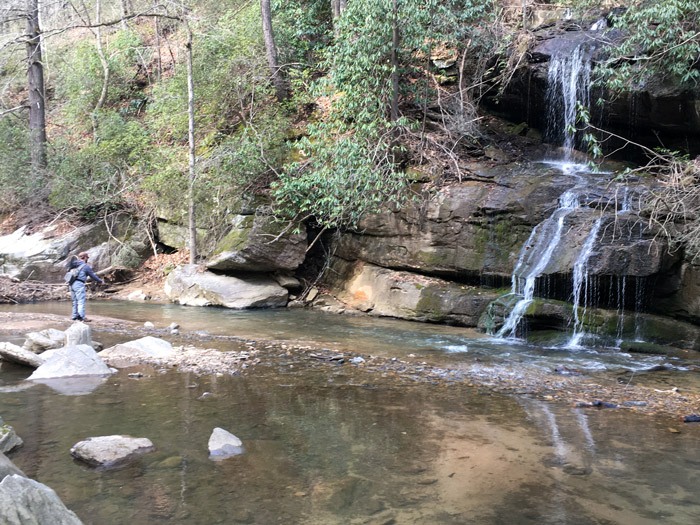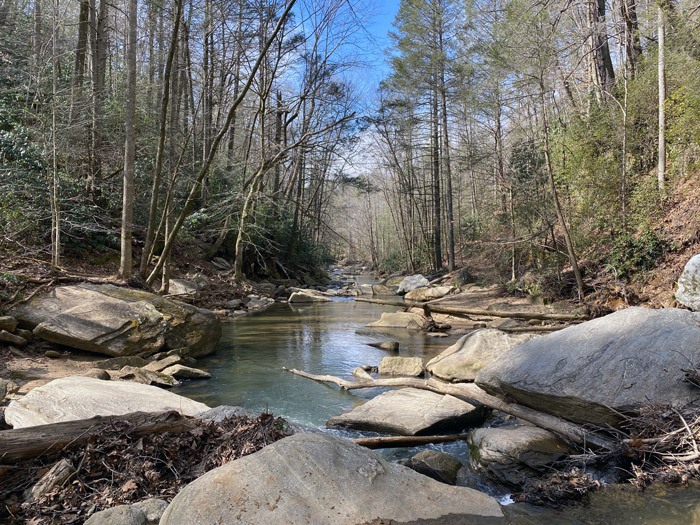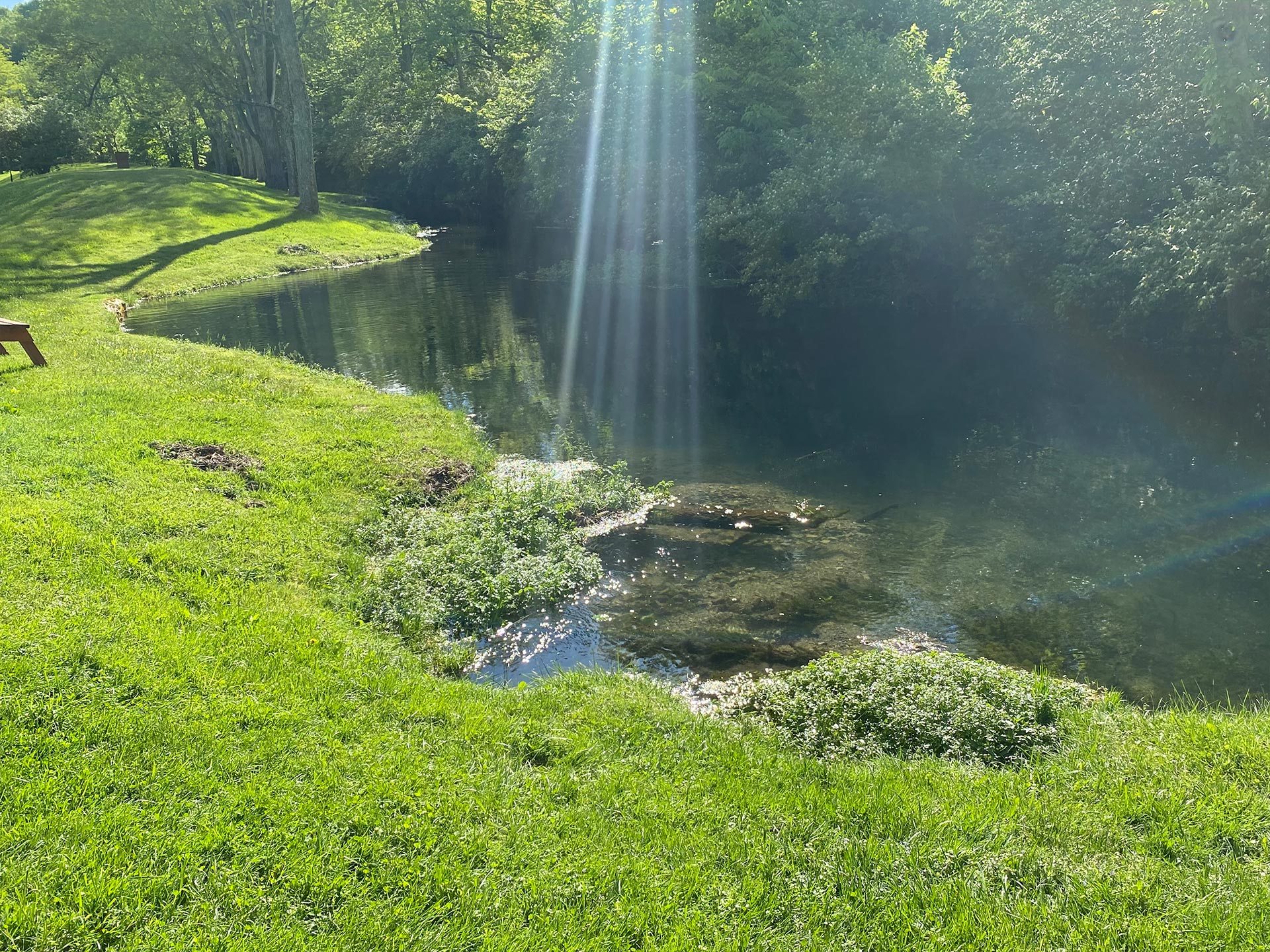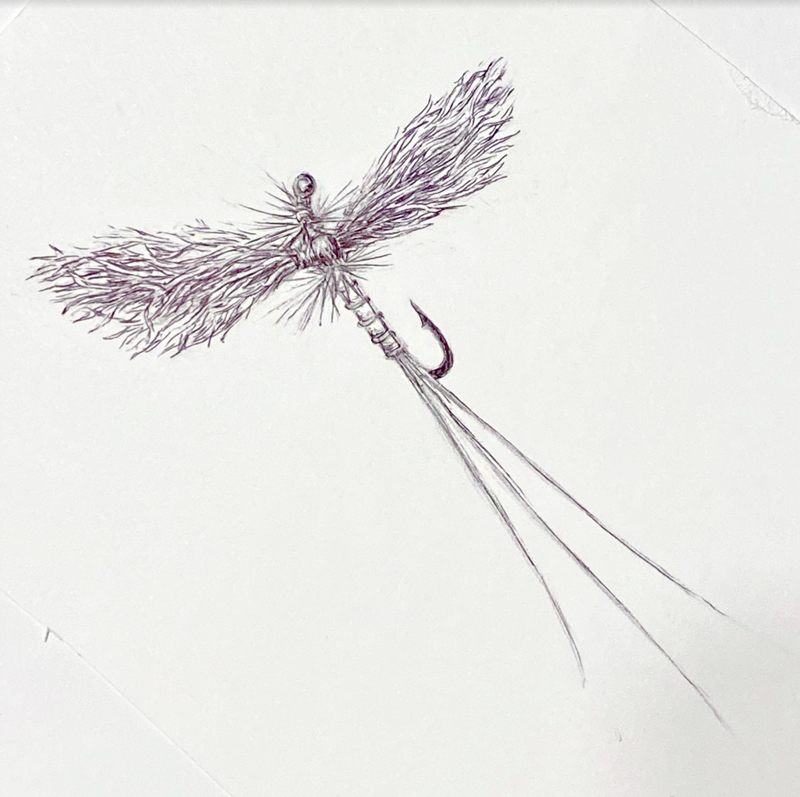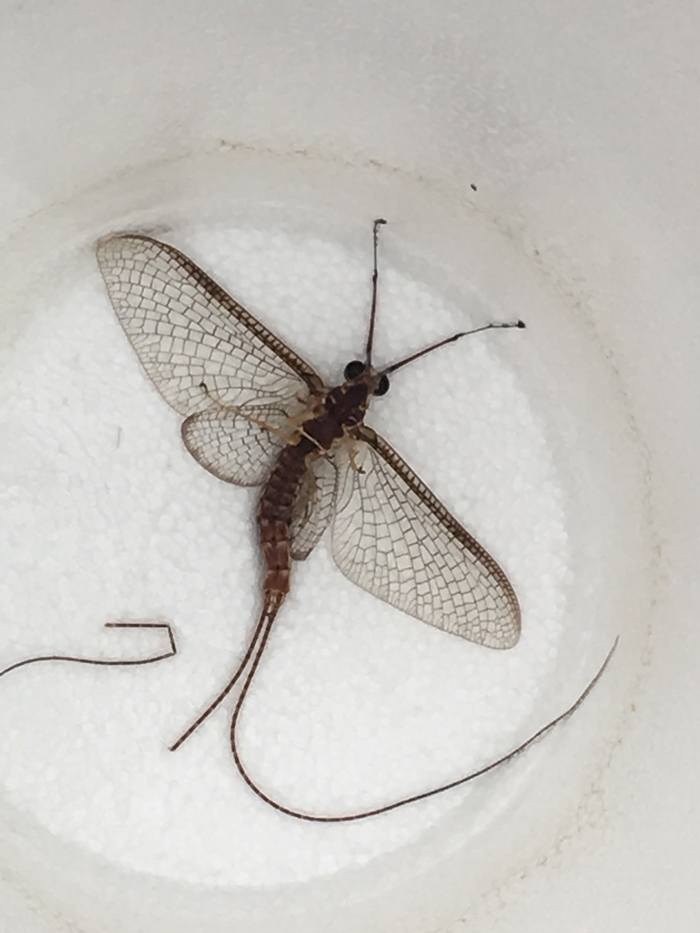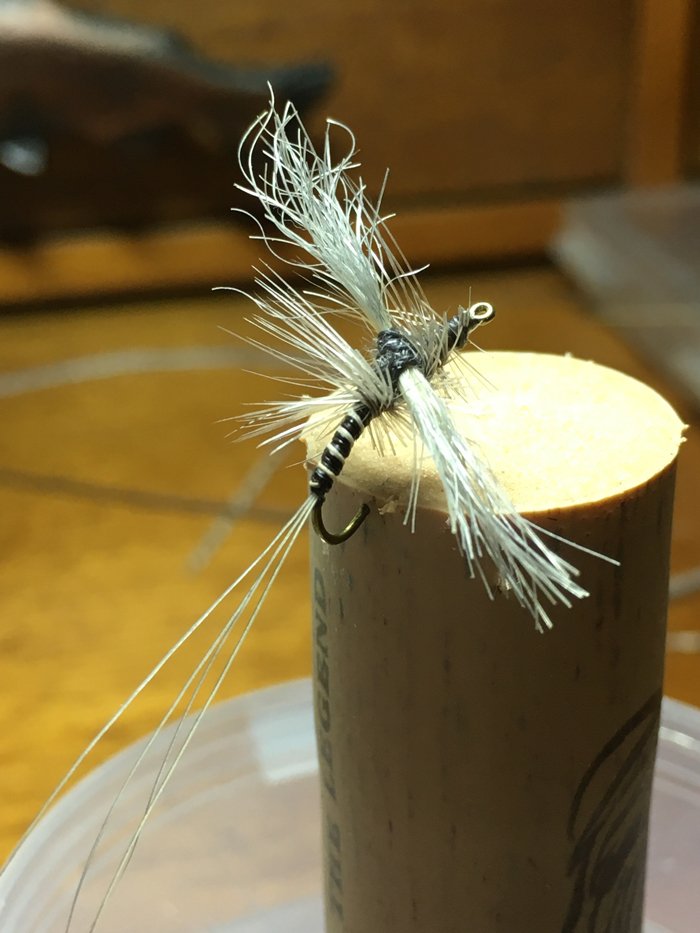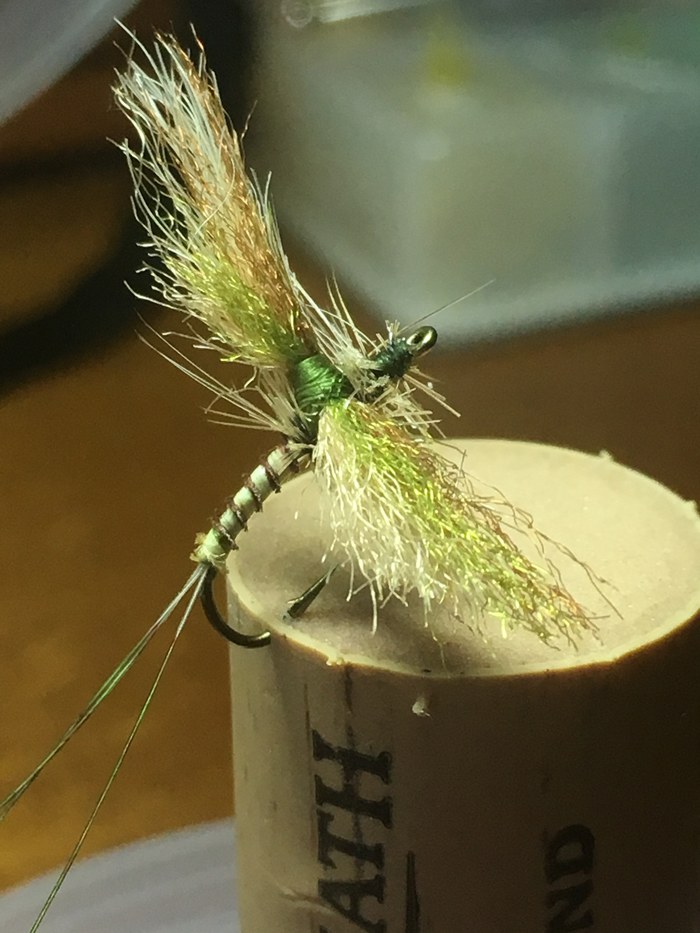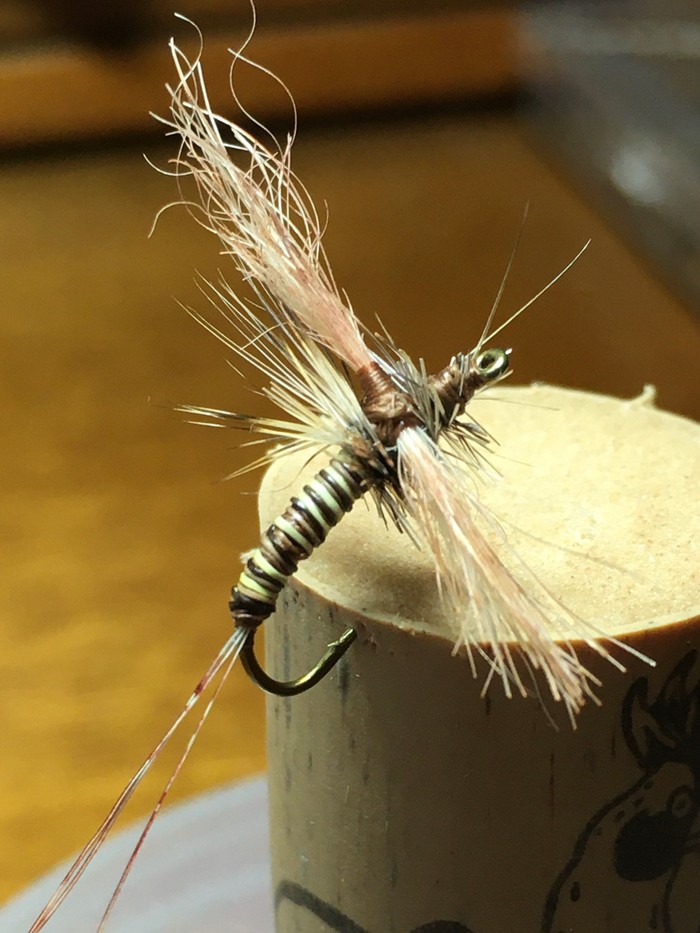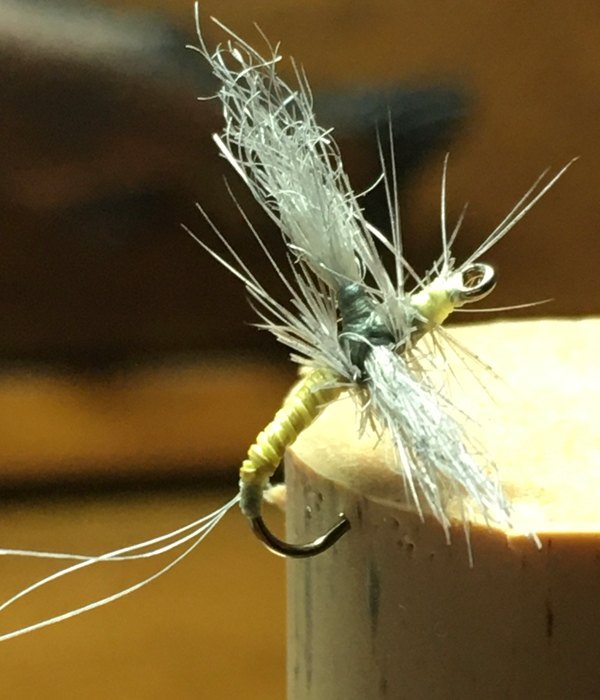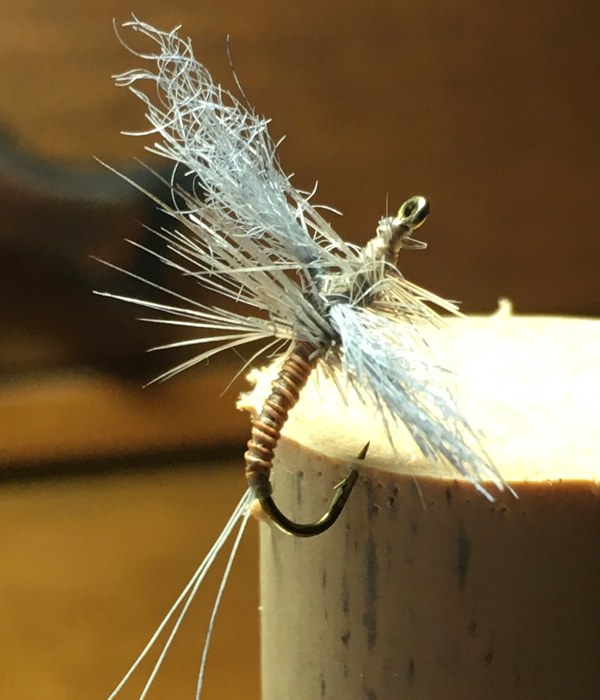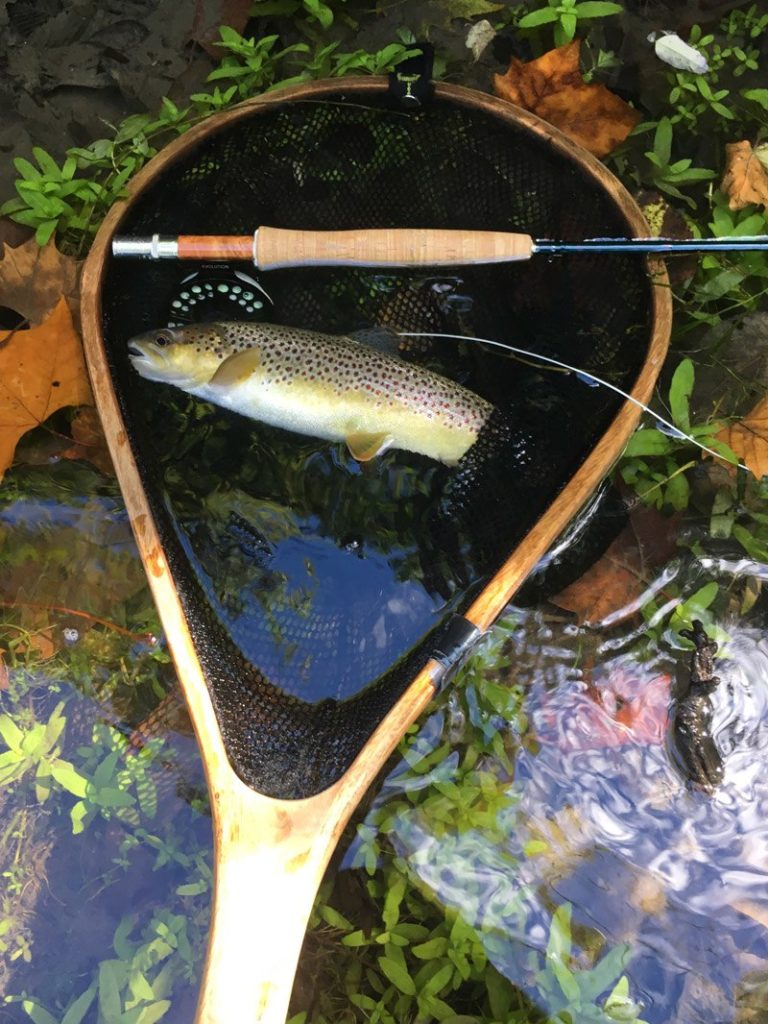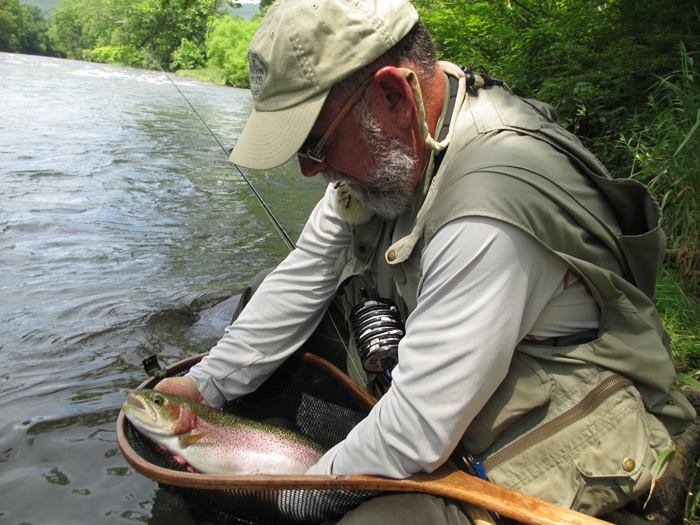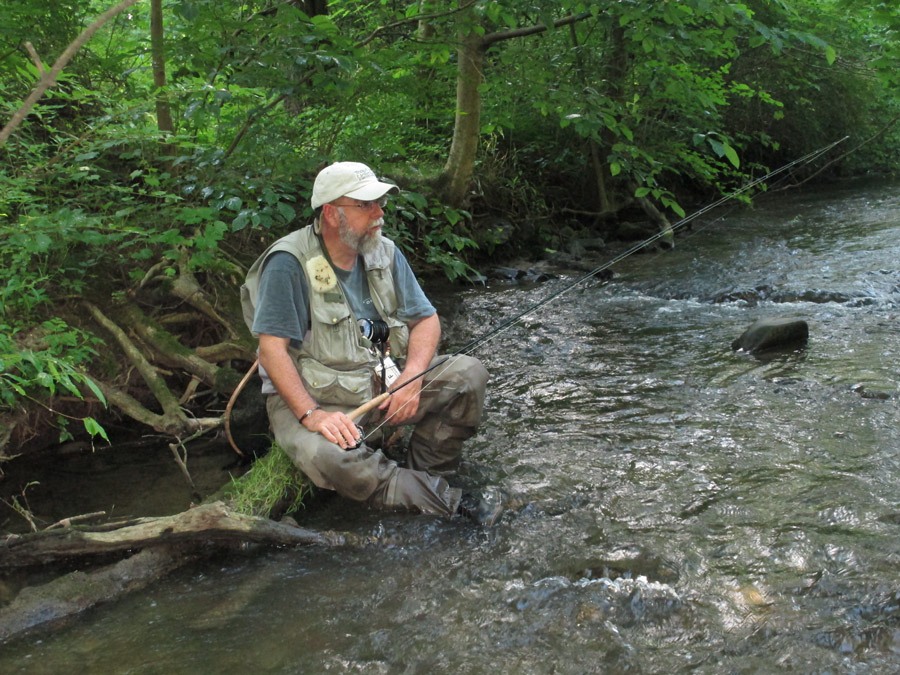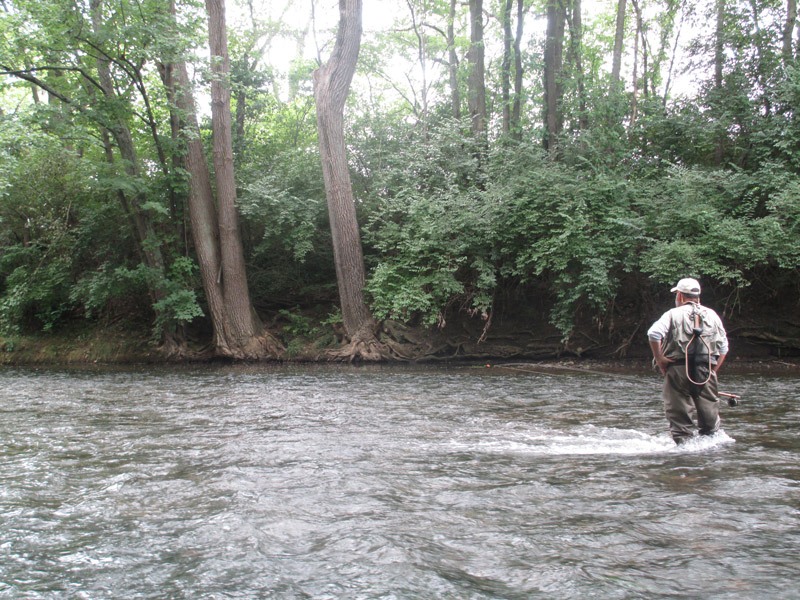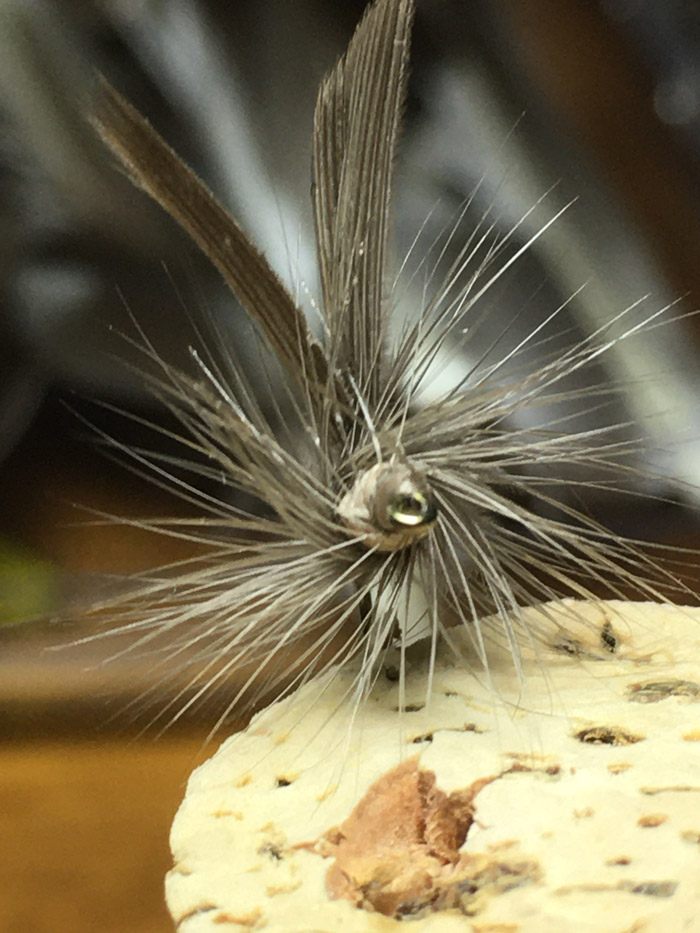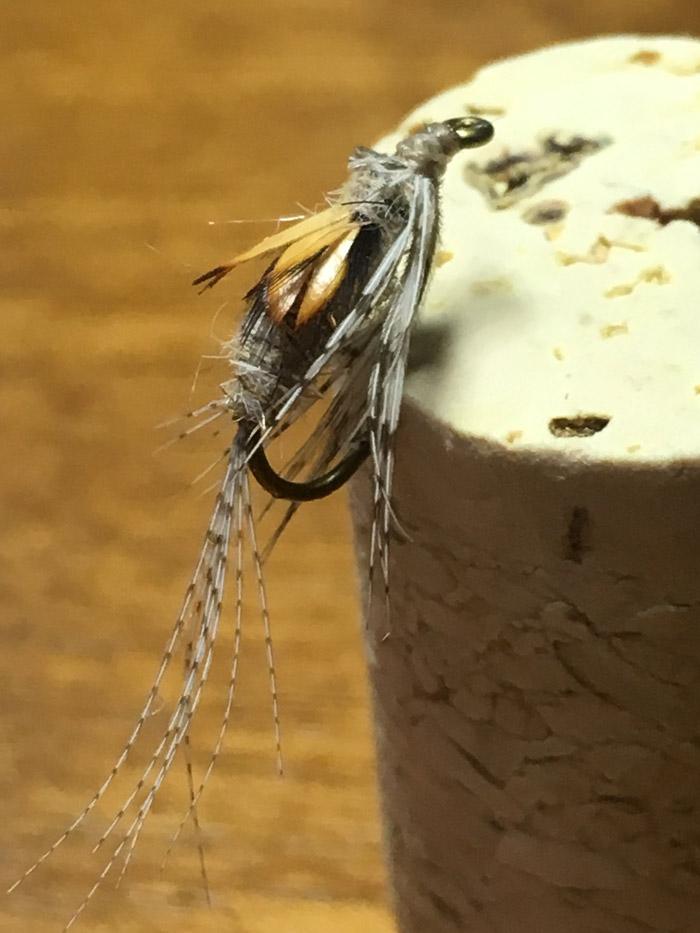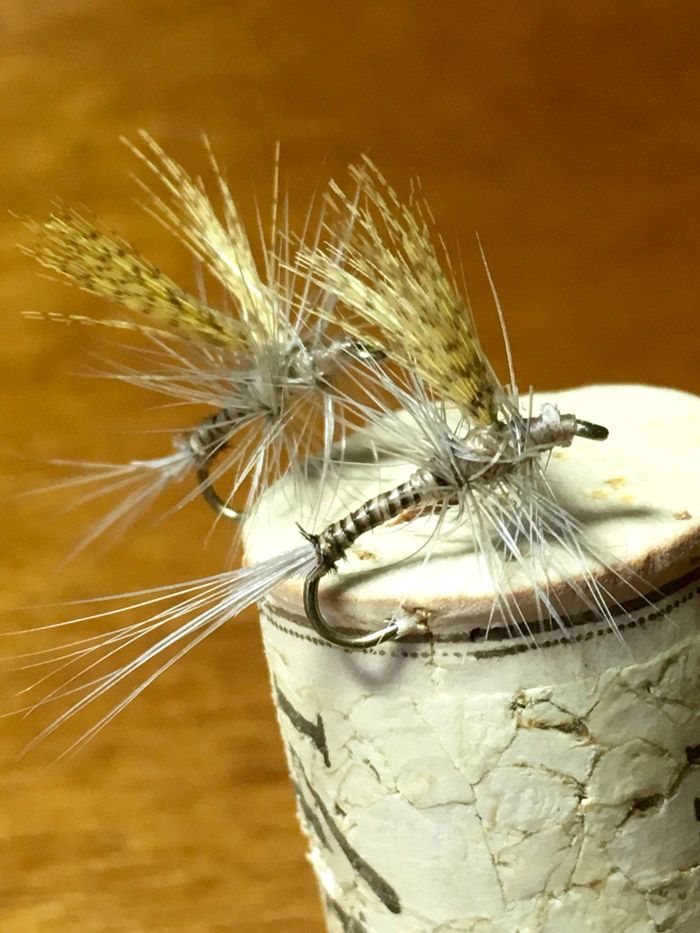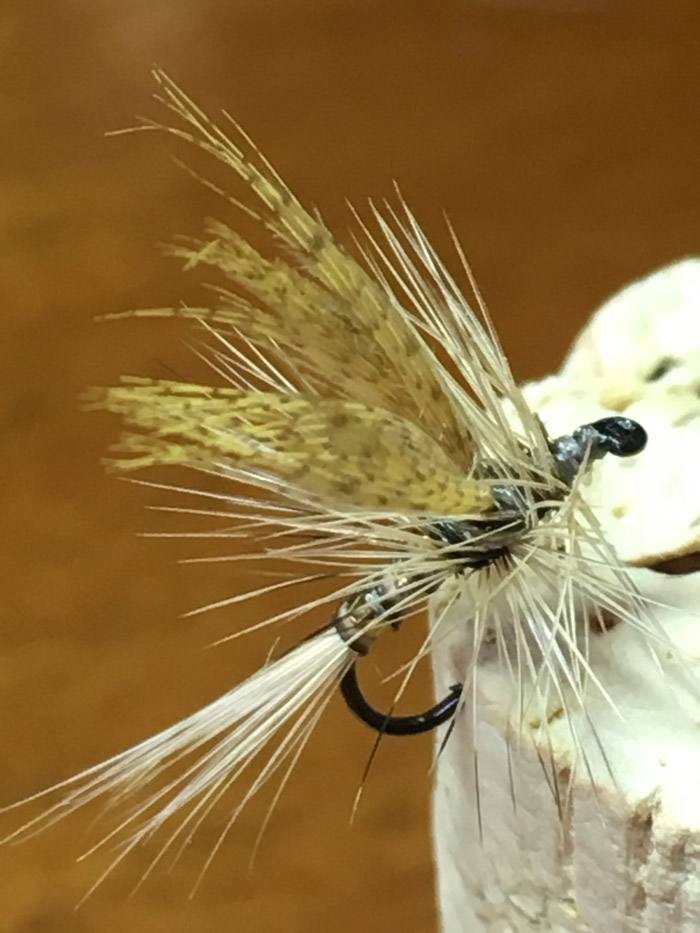I am not expecting to roll six anytime soon but, as a retired traveling salesman on Medicare, I am fully aware that I have more time in my rear view mirror than I do looking out the windshield. This reality has inspired me to be more in tune and intentional with each day that I am allowed to wander through God’s wonderful Creation while trying not to trample it along the way. This kind of thinking has grown me in my Faith and humbled me in my outlook on the world and how it was originally designed in the Beginning. For a fly fisherman looking for a piece of the origin story of streams and trout, I have found you have to go where the water comes from and the wild resident trout are protected and unmolested from the perils that lie below the last waterfall. Finding a pure, untouched by mankind piece of nature is the closest thing to Heaven one can hope to find in today’s world. For us here at Morrett Fly Fishing our search has led us to spend more time looking up and slowly wading upstream in the mountains of North Carolina. The path can get a little steep and slippery but we are enjoying the scenery as we go. We can only imagine what the view and the trout fishing will be like when we get to the place where the water bubbles out of the Mountain, the Beginning. I hope this kind of thinking is evident in how we conduct our lives and our fly fishing adventures.
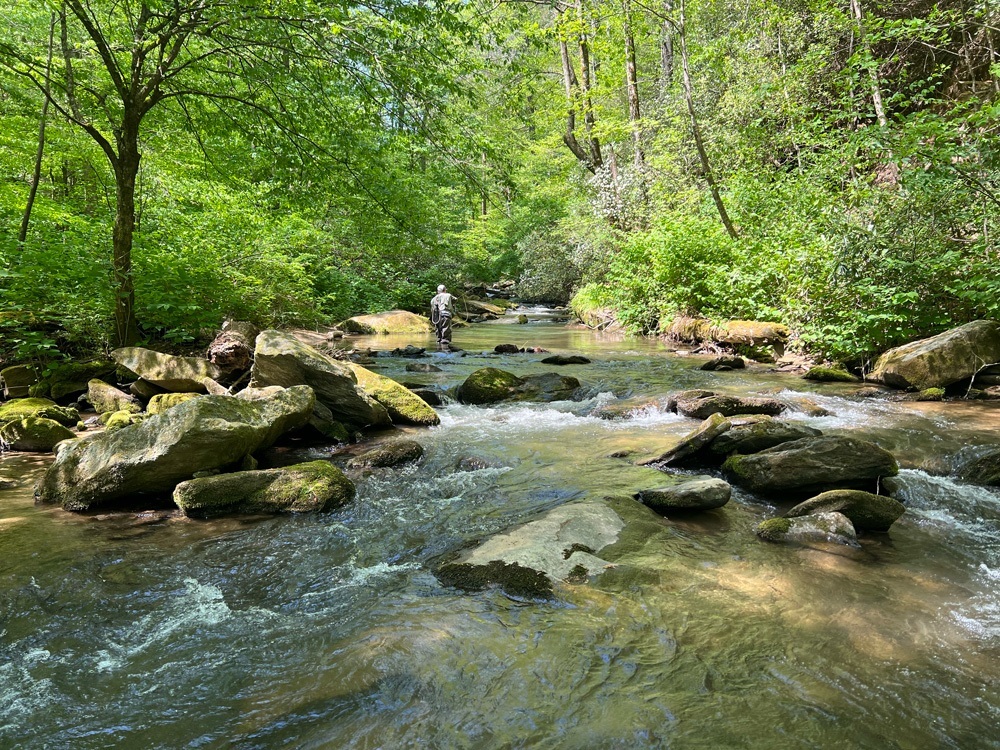
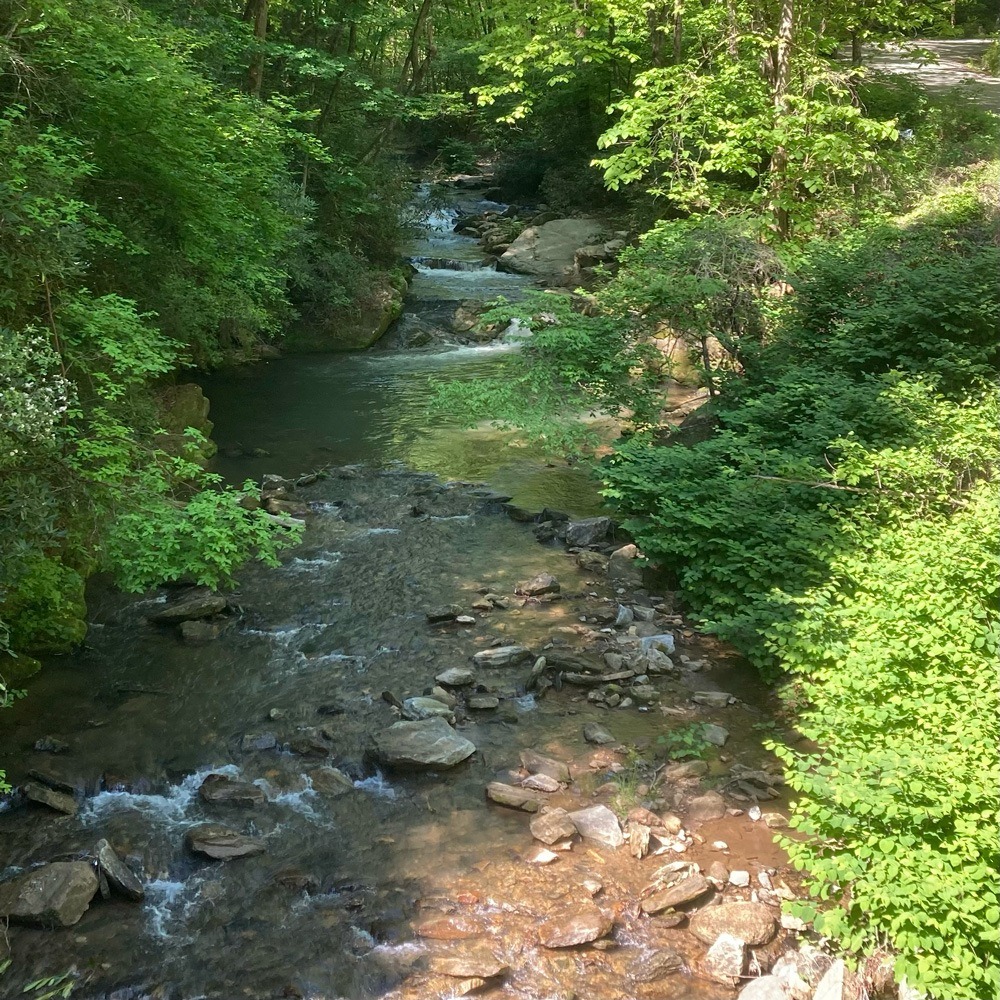
The Long and Short of It All
I have not written a journal entry since moving to the foothills of the Blue Ridge Mountains and my partners have asked me to write something down before I forget. The main reason Morrett Fly Fishing exists is in the case I go first they wanted to have some stories available to tell around the campfire. Thank you Mel, Andy, and the entire team at CreativeFuse. I am not sure they are listening to all my ramblings in the first place. As a by-product of our endeavors, hopefully there is some content included that can help other fly fishermen out there on their own journey. Only through experiences I have been allowed to enjoy, with much more capable guides and fly tiers than myself, am I able to help others along the way. With the addition of over 650 new subscribers to our website over the last couple of months and the fact that an update is overdue, if you are so inclined, please catch up by reading some of our previous journal entries for some background. All that being said, please allow this new writing to bring all those interested up to date.
New Focus
The phrase “New Focus” aligns itself nicely for us here at Morrett Fly Fishing. I have spent most of my fly fishing endeavors focusing on chasing, and sometimes finding the big boys in the stream for the proverbial hero shot that can come with the pursuit. I certainly am not condemning that attitude but I believe it may have come at a cost. Now that I have reached a point where I have experienced many different streams as well as a fair amount of monsters that swim there, I believe I may have missed some things along the way. I am quite fortunate that my partners in crime have been diligent in regards to photos of the adventure and not just the treasure that I was seeking. I don’t know how many photos I have checked out after a trip only to discover many wonders all around me while fishing that I didn’t even notice while I was there. That is a shame. I am old enough to have logged many trips before the miracle of digital photography and I am sure many wonders are lost to me now. I am not feeling sorry for myself but rather I feel the need to pass a little wisdom on to the next generation of fly fisherman. It has been said that Trout live in the most beautiful of places, take the time to confirm this observation for yourself. Take a look around at Creation, thank the Creator, and pursue your quarry with the knowledge that the view you are enjoying will never look this way again. This is especially true when it comes to the Stream. Someone said a long time ago that you will never stand in the same river twice, it changes while you’re standing in the current.
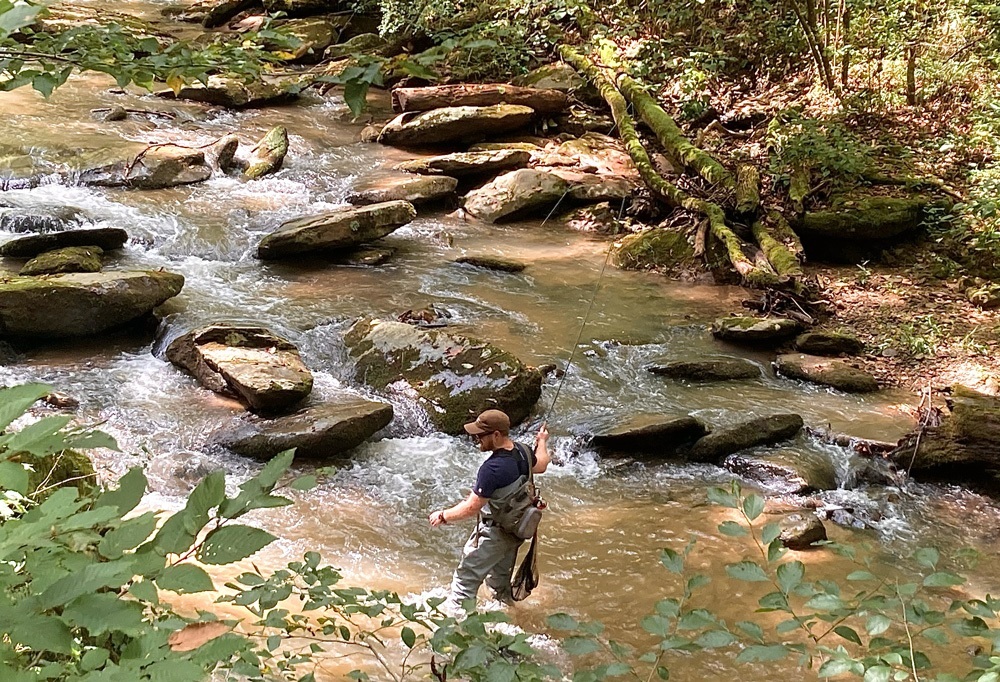
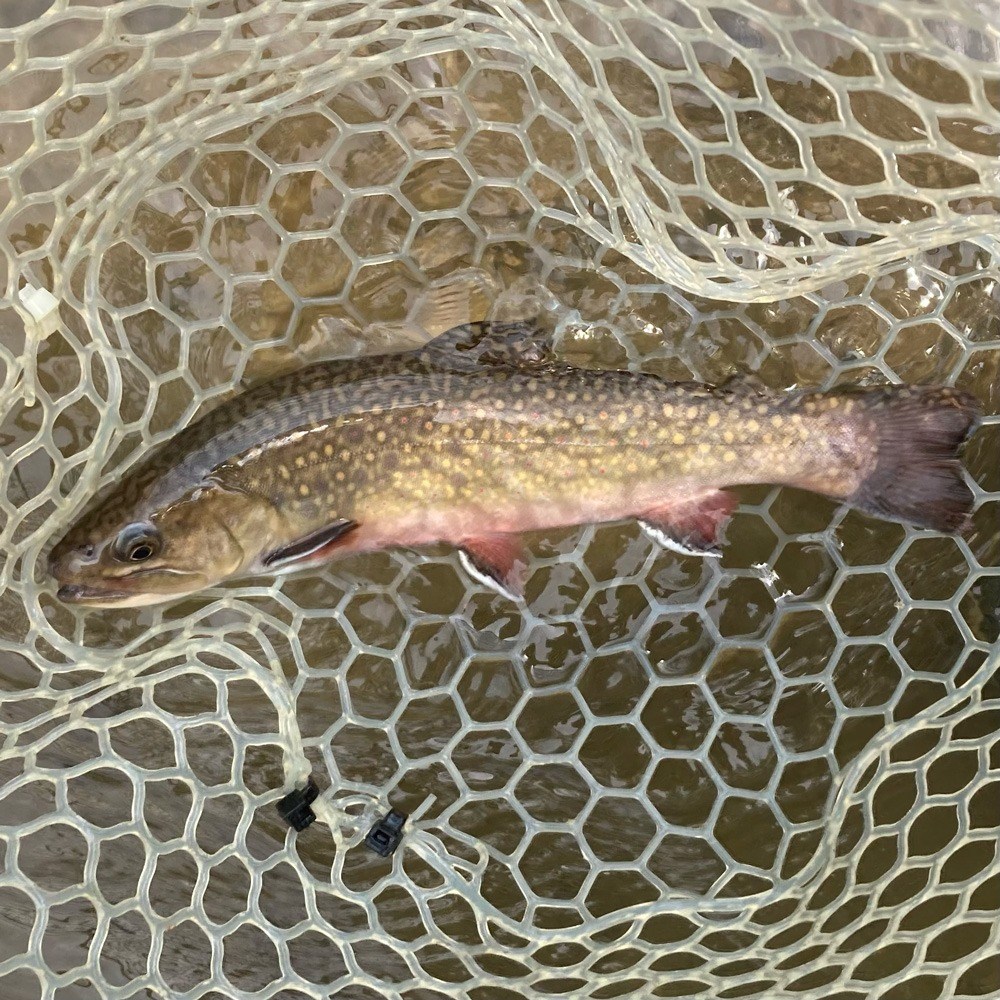
Since moving to the Foothills of the Blue Ridge Mountains in SW North Carolina in August of 2023, I have been forced to slow down in regards to my personal fly fishing adventures as well as my guiding trips. Oh make no mistake, I consider this a Blessing and not a curse. The topography coupled with the structure of Mountain Streams in this area has forced me to take a seat on a nice boulder while watching my young partner Andy Baker break trail while identifying the easiest path to the next honey hole. I am amazed at how much I am able to observe while being forced to stop and just watch. I am now the one taking the photos of the adventure while Andy is watching for the trout to rise. I know my young partner has adopted this slower more intentional approach due to the fact he can do both while scouting on his own. Well done young man and thank you for finding some beautiful streams for us to explore together as well as share with other brothers and sisters of the angle. I trust you to pass this on to the generations that will follow.
Melanie, my wife and fishing partner of 40 years, and I have adapted nicely to Mountain Time since moving to the woods. We still receive inquiries from fly fisherman in the Southern Ohio area in regards to fly fishing opportunities which we consider humbling and cool at the same time. Maybe we did have some influence on the fly fishing community while guiding out of ReelFlyRod.com after all. My old guide partner, Matt Parker of Dayton Fly Fishing is my go to recommendation for all things fly fishing in the streams and rivers of SW Ohio. Parker has an old soul when it comes to trout fishing and it is without reservation that I recommend anglers of all levels to seek him out and he will make sure your trip is exactly the experience you imagine. It would be a poor compliment to the art of guiding if I said I could book a trip in my new world at this time. We are learning about the local streams in regards to the resident trout and the food that they eat as we speak. Oh, we are finding success as we wander and share with friends and family but not to the point where I would feel comfortable with all the responsibilities that come with guiding on these beautiful streams, for now. That being said, I was introduced to Davidson River Outfitters (DRO) over twenty five years ago and they were a huge influence on my Trout Bum lifestyle. I recommend all inquiries that I receive in regards to fly fishing in this part of the world to Kevin Howell, owner of DRO. The very talented guides that he employs can introduce fly fishermen of all levels to a fly fishing experience you will never forget. If you are lucky and he is available, Walker Parrott would be my go to guy.
As I have mentioned, when it comes to guiding, I am in training and I will know when I feel comfortable and confident enough to offer up my services to the many clients I have met along the path. Custom fly tying is another story. Less time on the water has allowed for more time on the vise. With this writing I am pleased to announce that this is the first week since the first of the year that I do not have a custom fly order in the works. That means our personal boxes are being tended to for the immediate future. I am old school and poo pooed this whole internet thing in regards to the exposure it can afford. I guess it is not a fad after all. Andy’s team has opened up so many different clients for Custom Trout Flies I have been amazed. When I started tying flies over 25 years ago I could have never imagined that our flies would be purchased and presented to Trout in around 22 different states. Based on the reports I have had from many happy clients, we have added to their experience and in more than a few situations, made their day. Mission accomplished! On a side note, no kidding, I just checked my phone and it looks like we have a new order in the works.
That is about as up to date as I can get everyone at this time. We will try to be more frequent with our journal than we have been over the last few months. Please look for real time info on our social platforms Facebook and Instagram. Old school guys and gals are welcome to give us a call at any time. If I do not answer, please leave a message and I will get back with you. Warning, I have been known to bend an ear if given the opportunity. Mountain Time allows for this kind of schedule. In closing, I feel compelled to share my daughter Sarah’s favorite Bible verse and what has become our inspiration on a daily basis. Psalm 121: I lift up my eyes to the Mountains, where does my hope come from? My help comes from the Lord, the Maker of heaven and earth.
